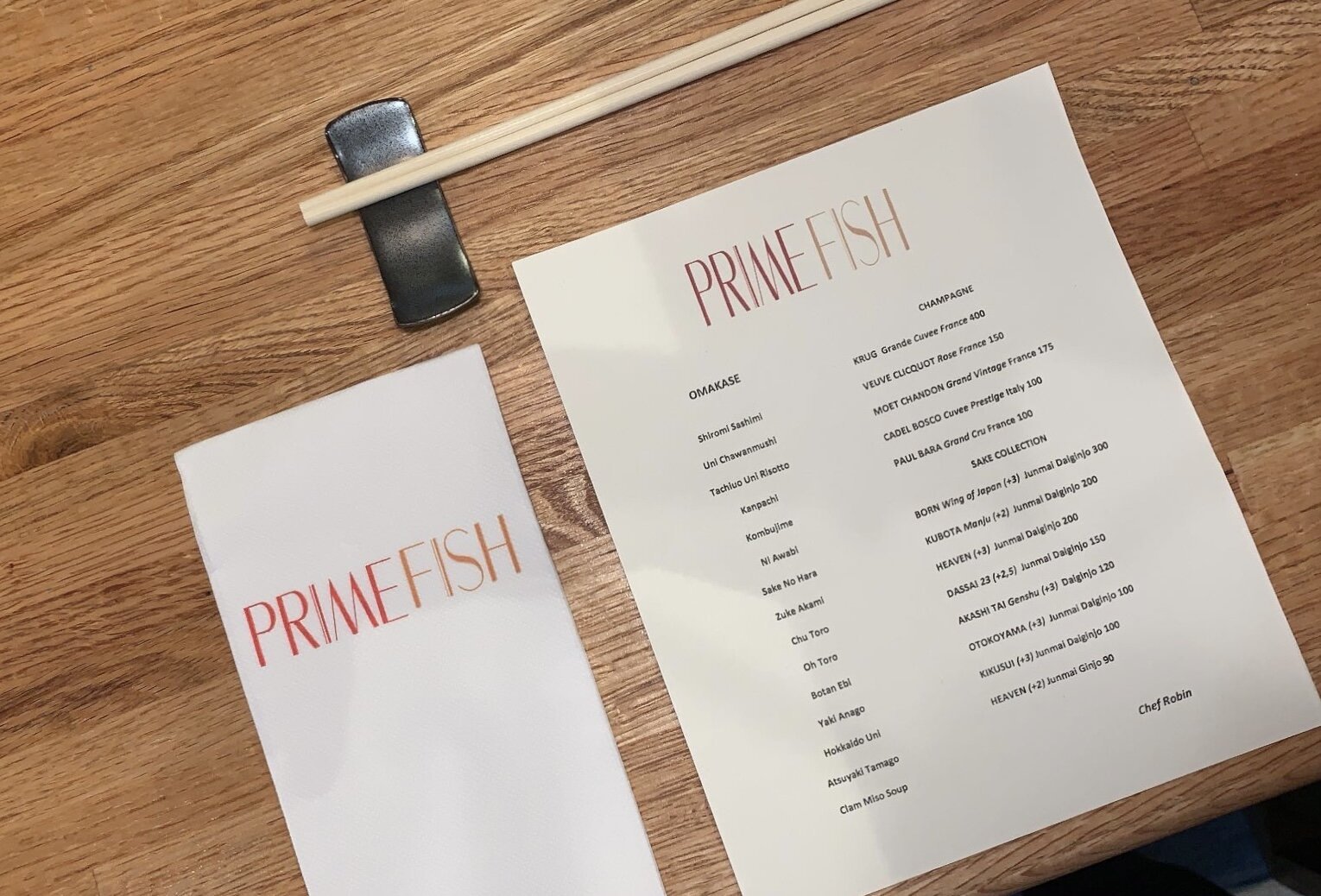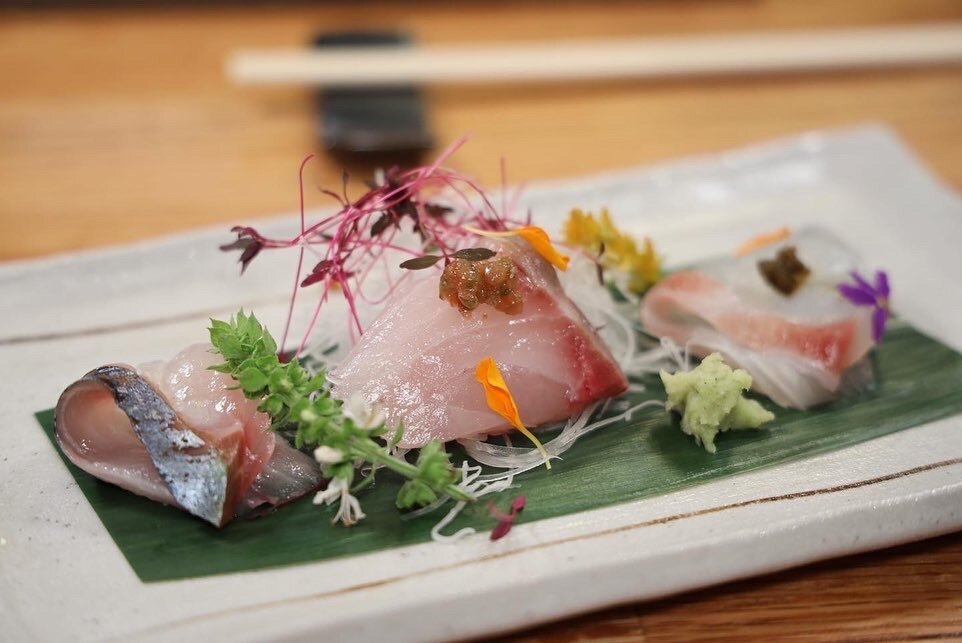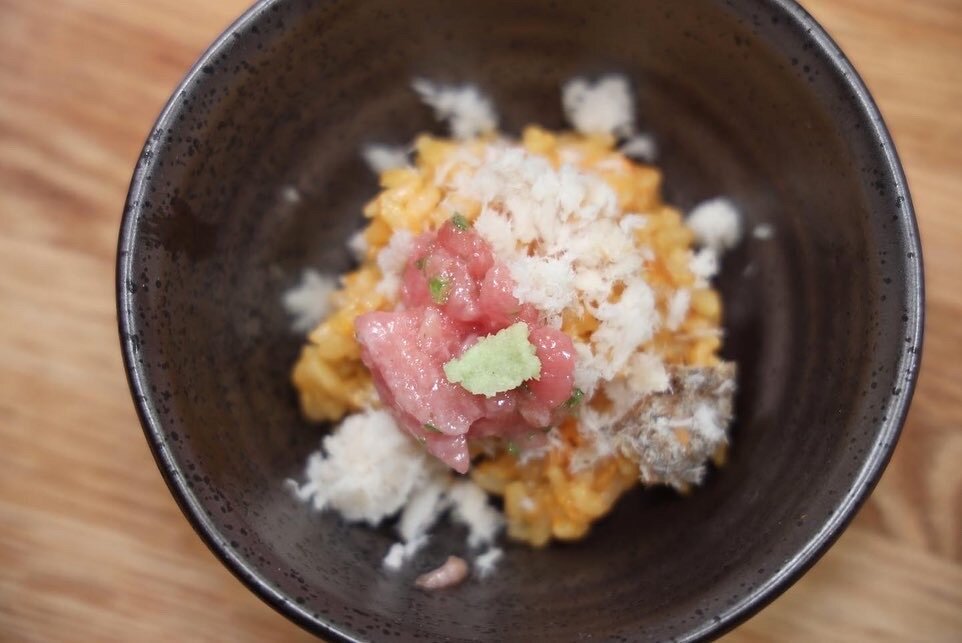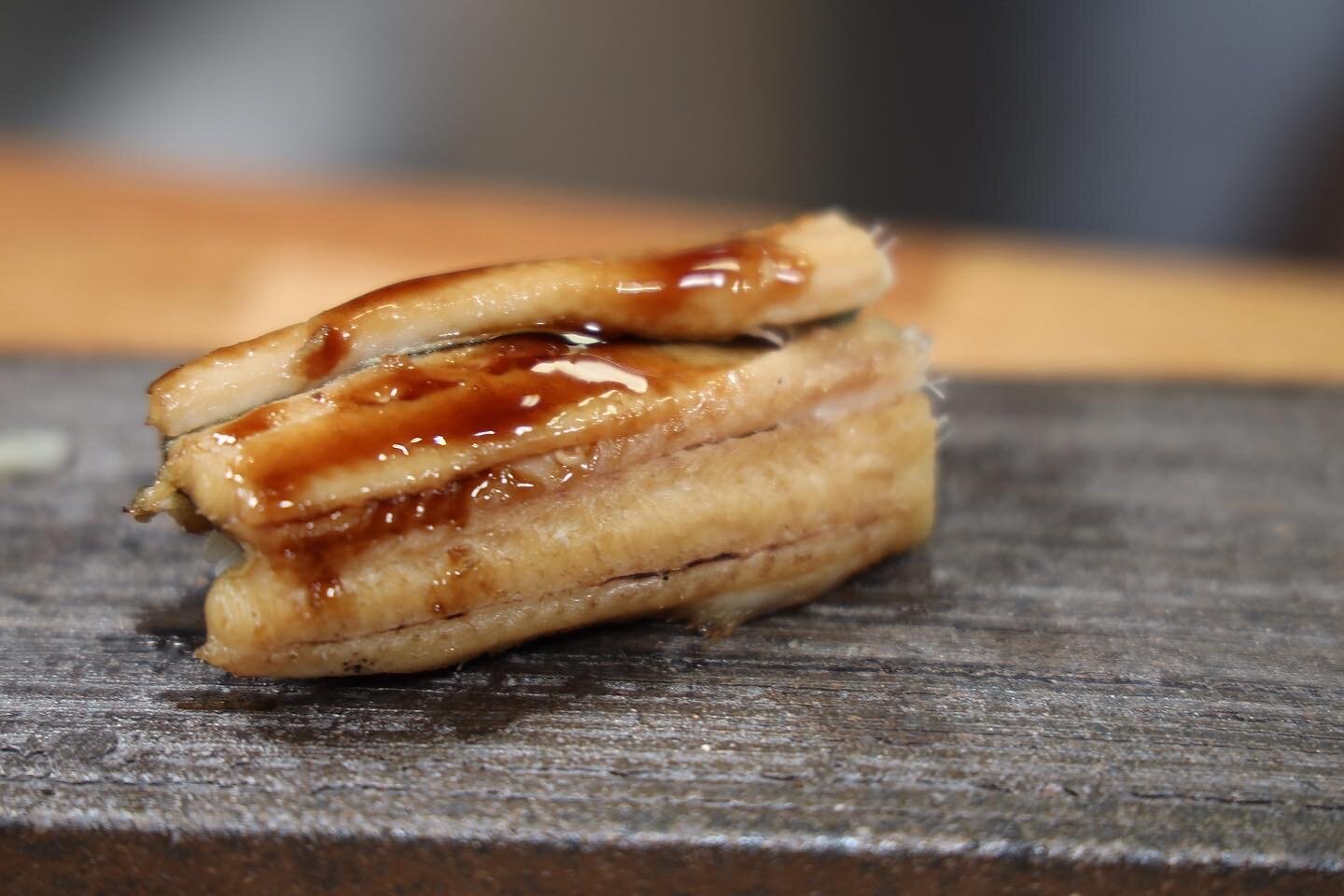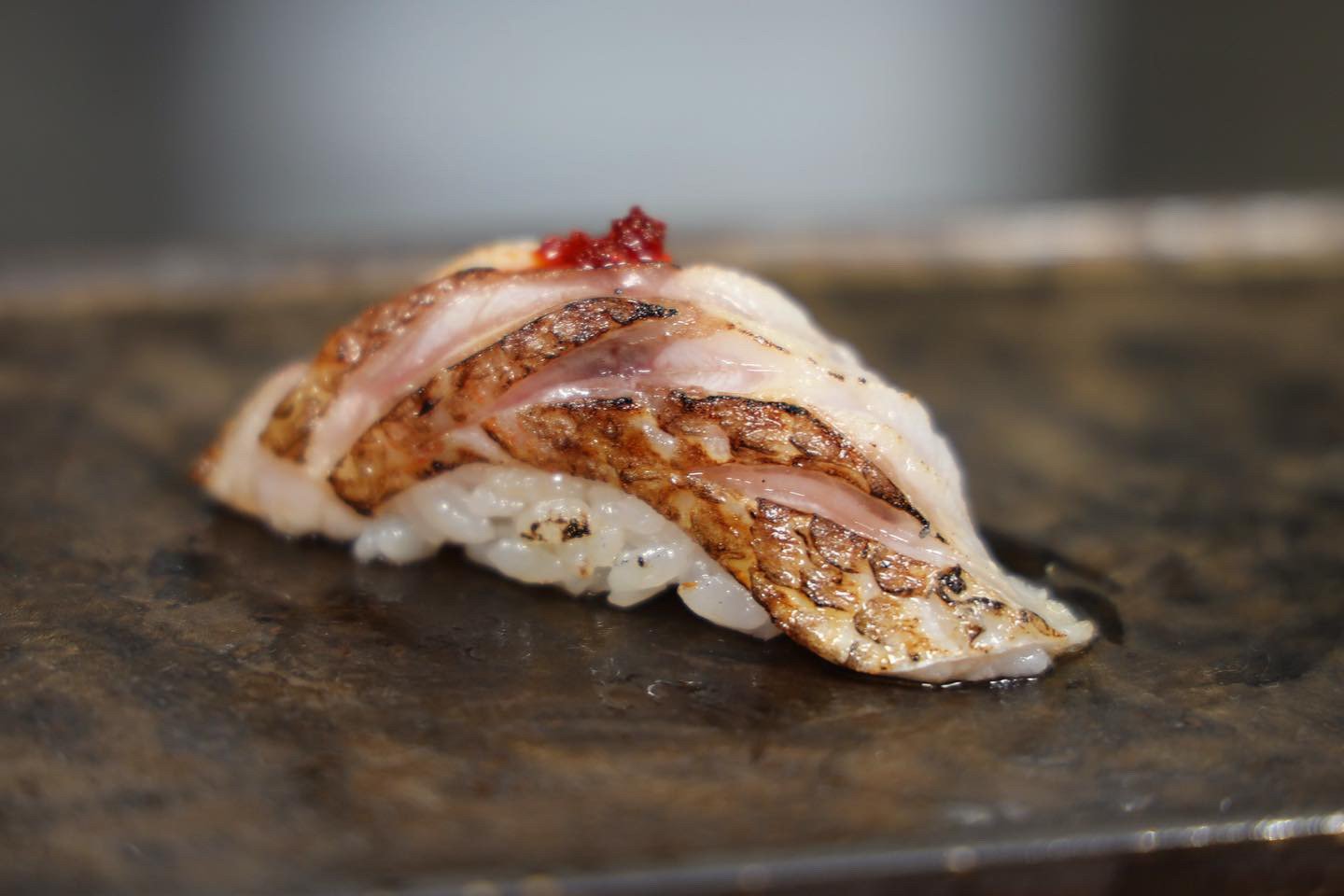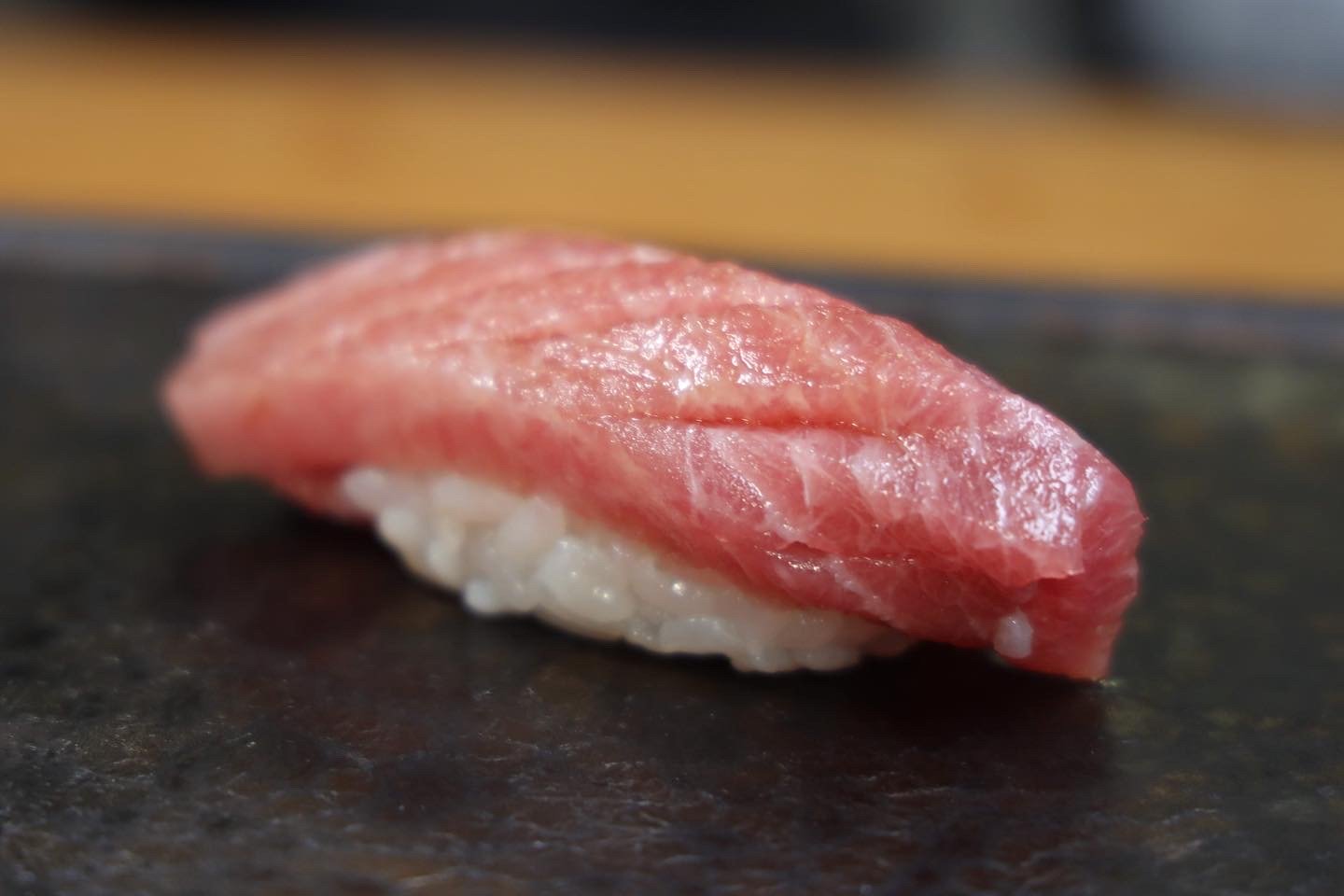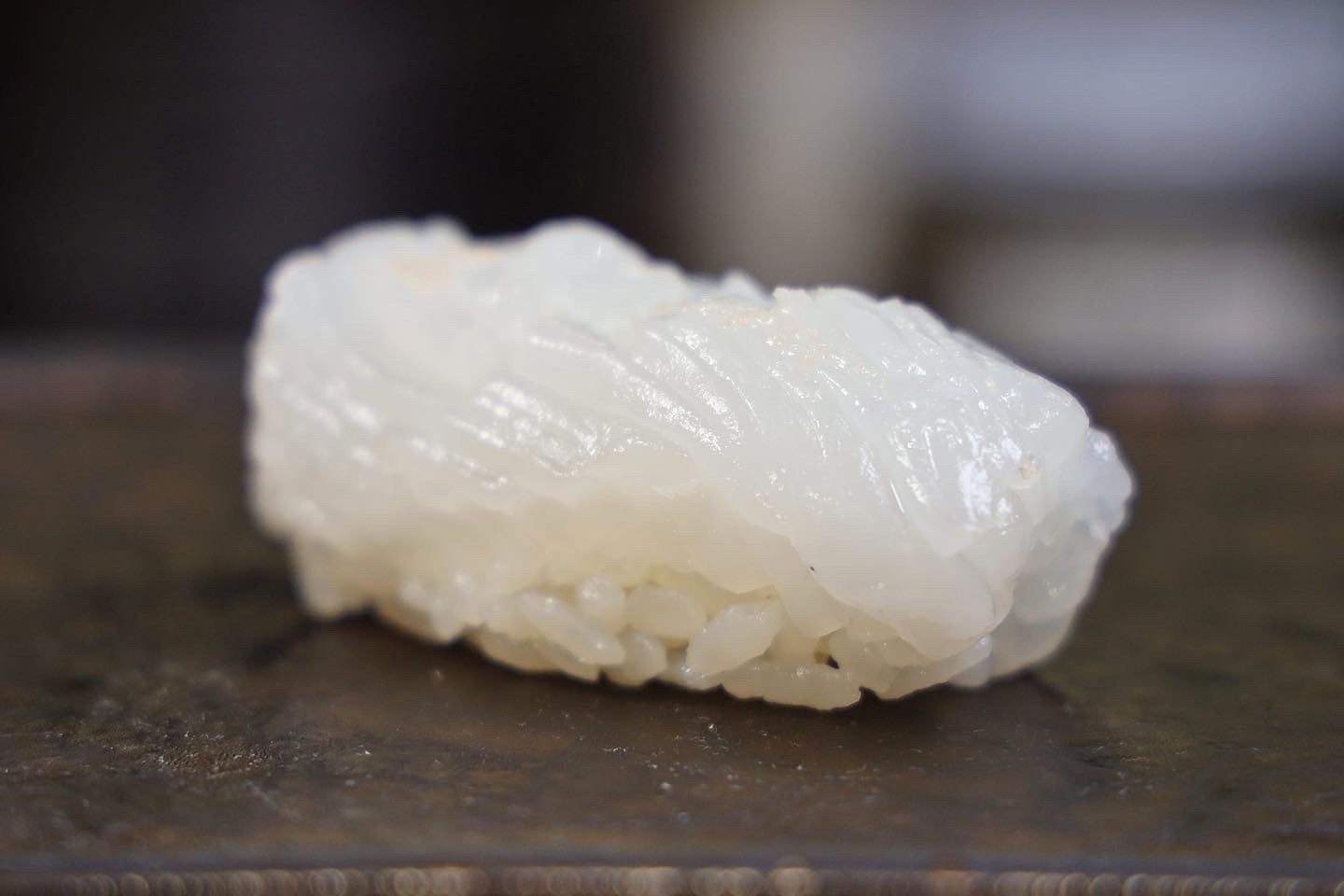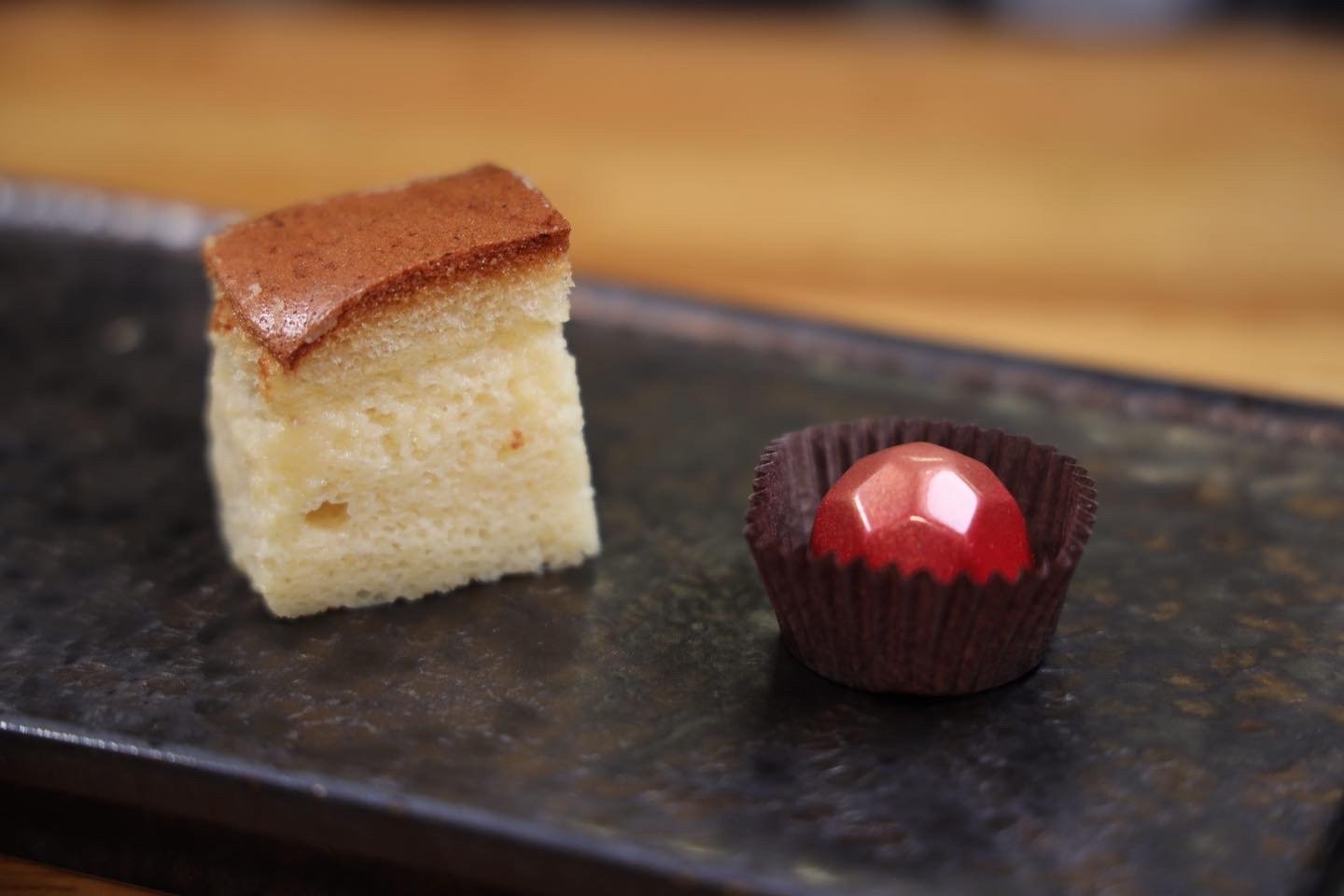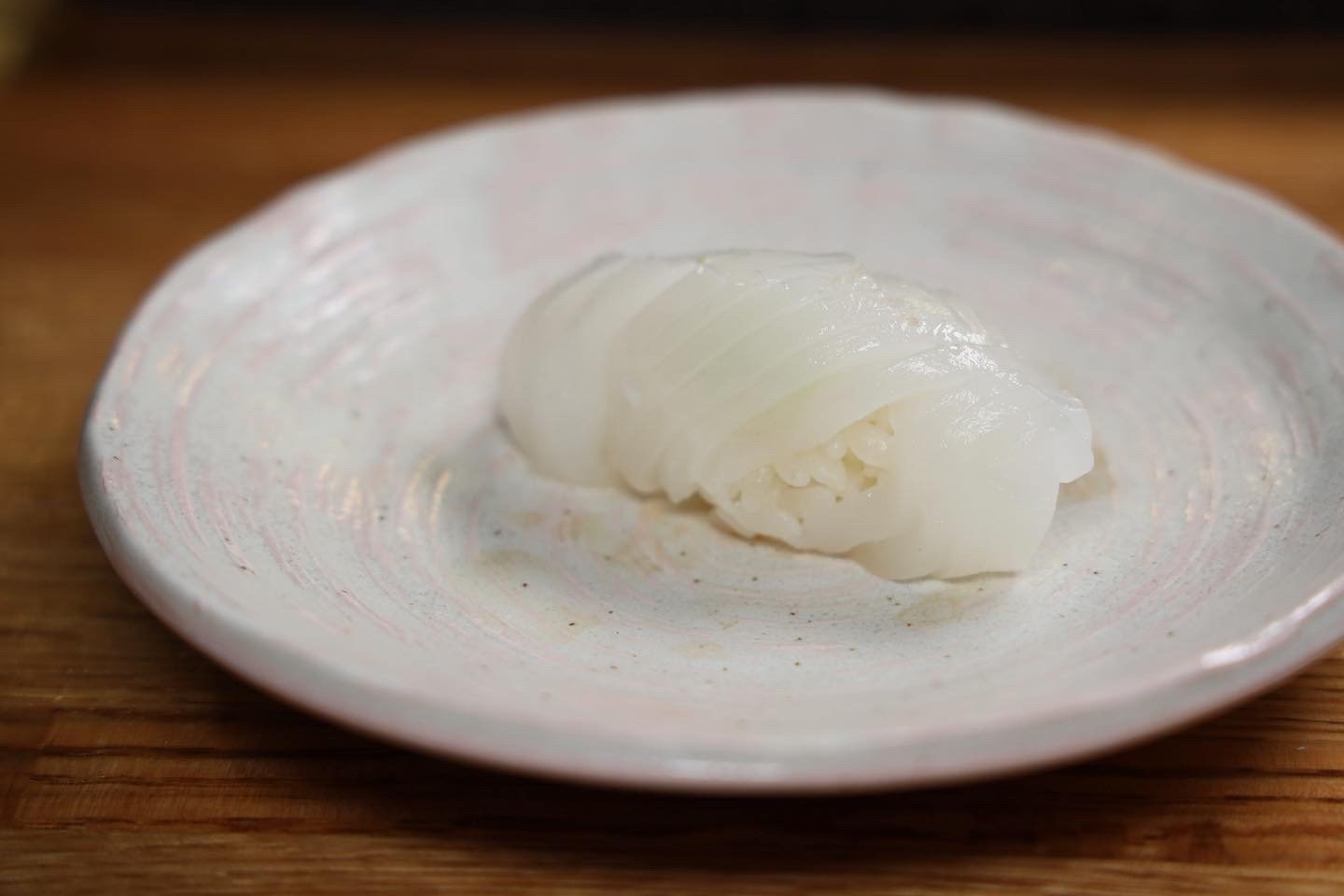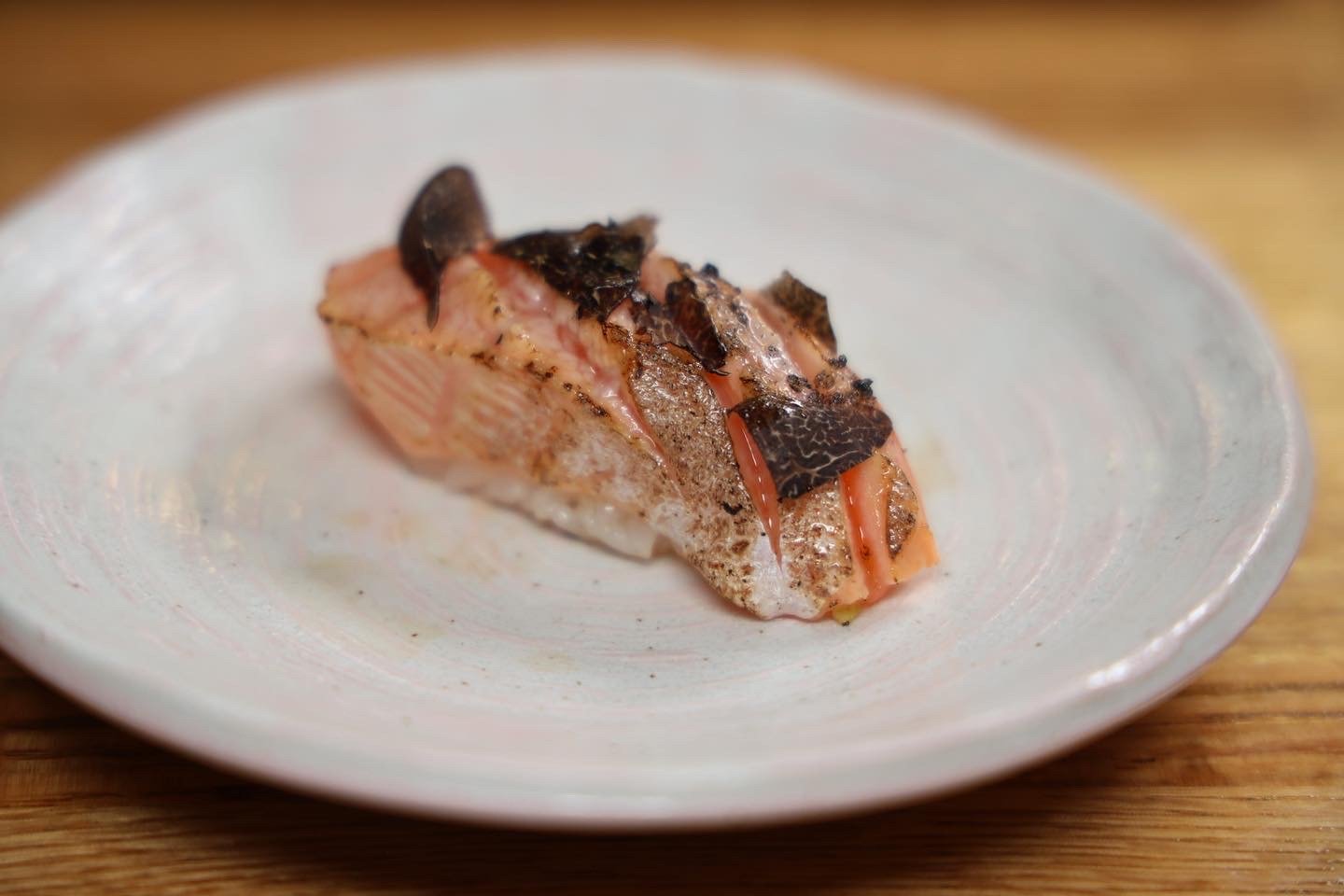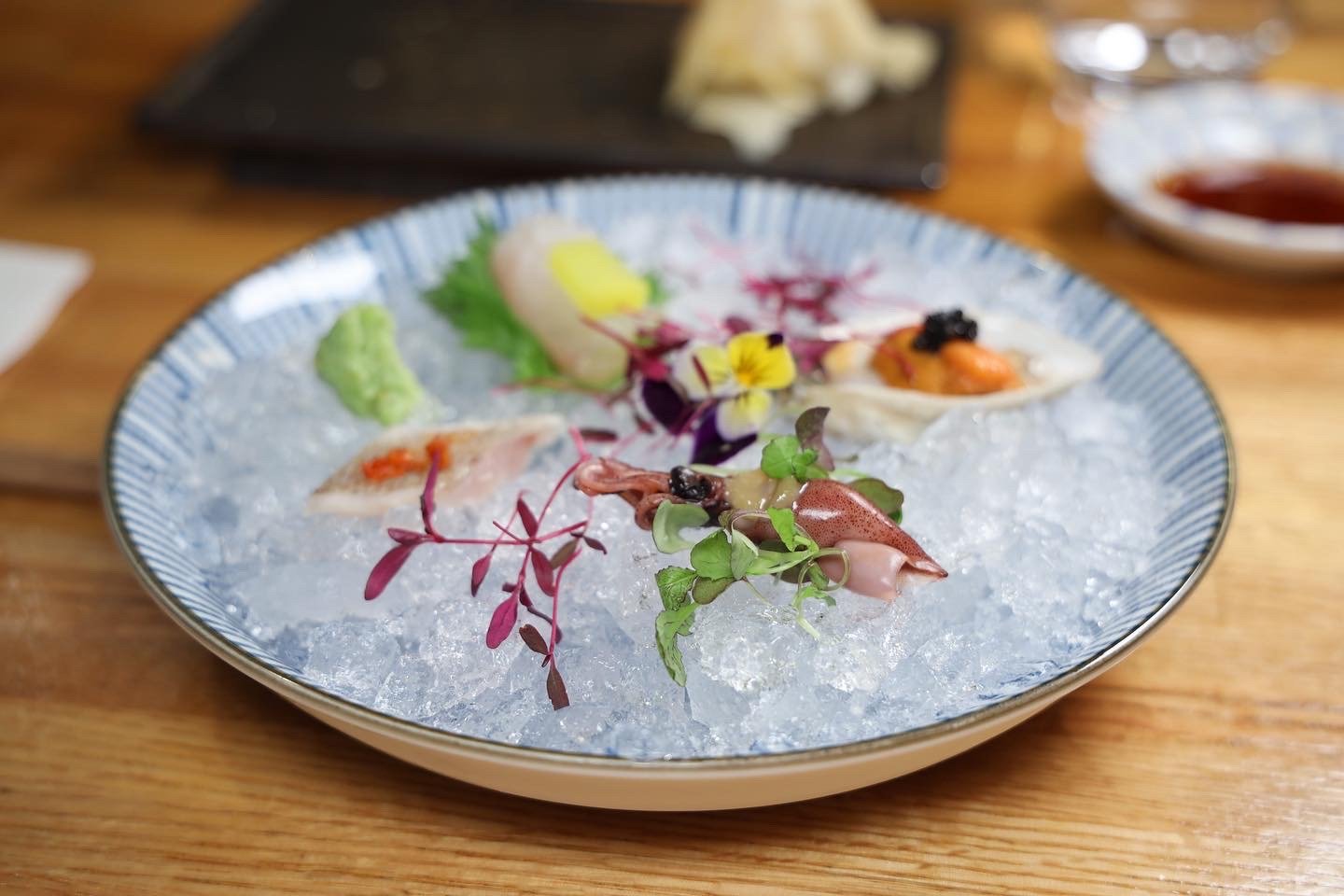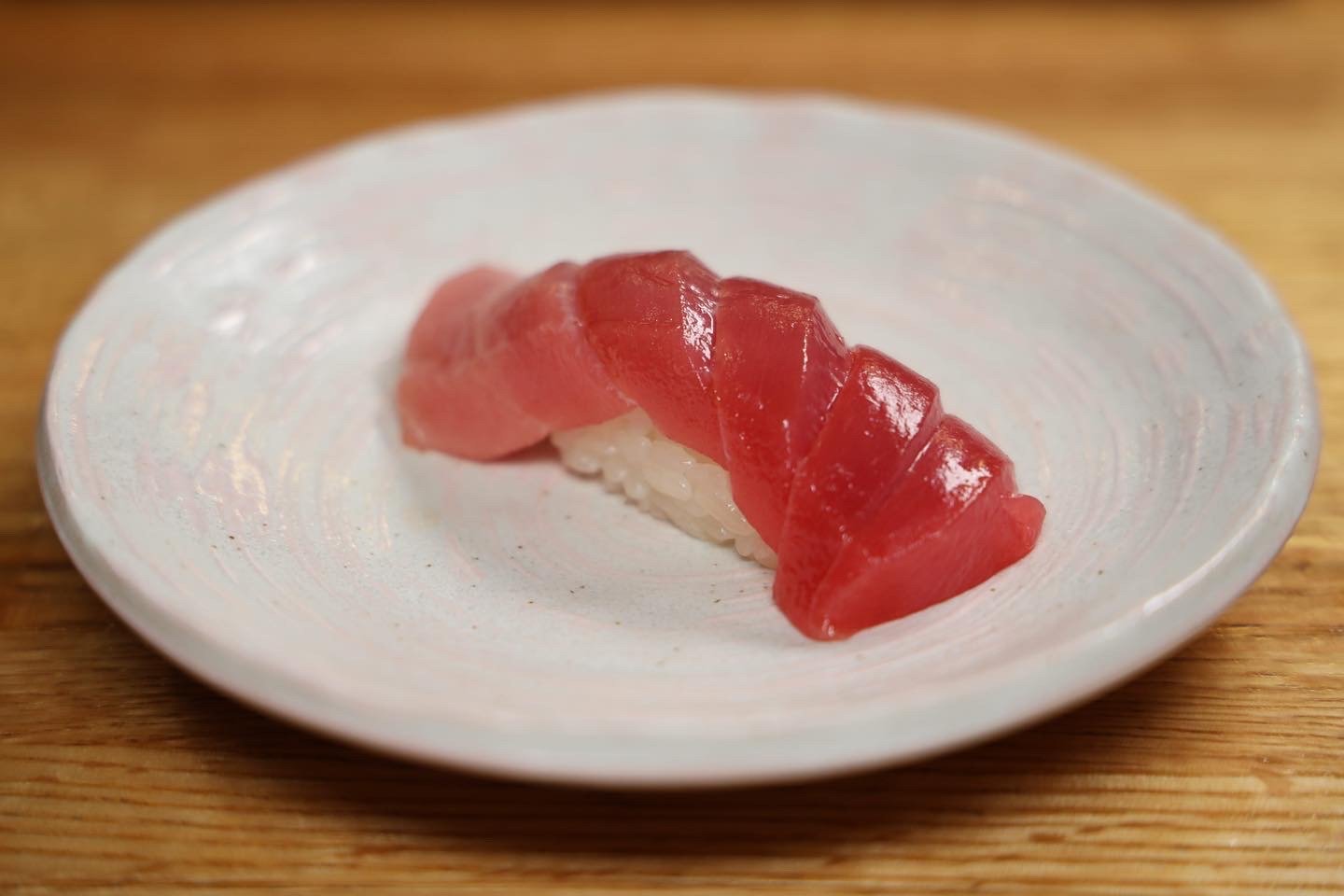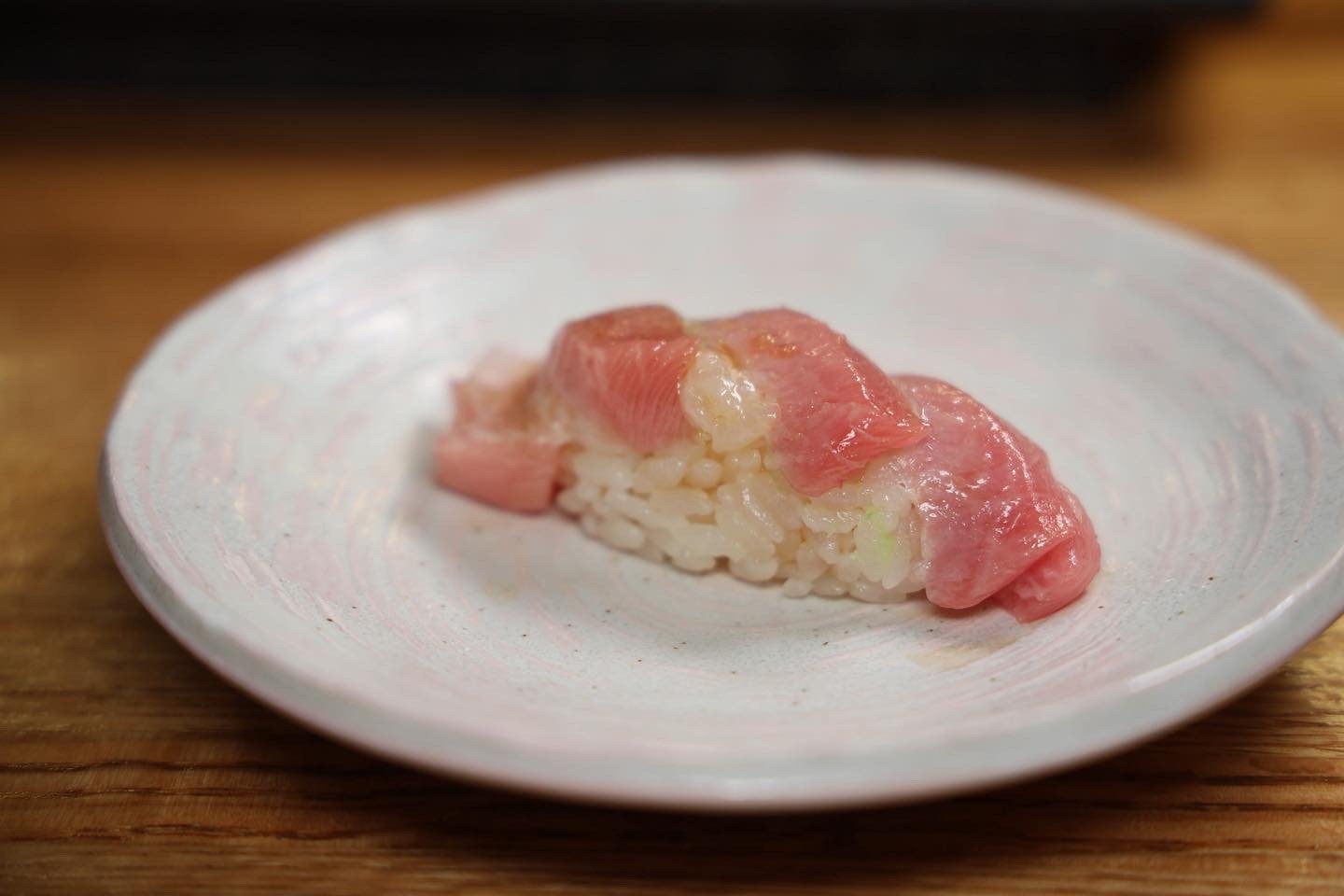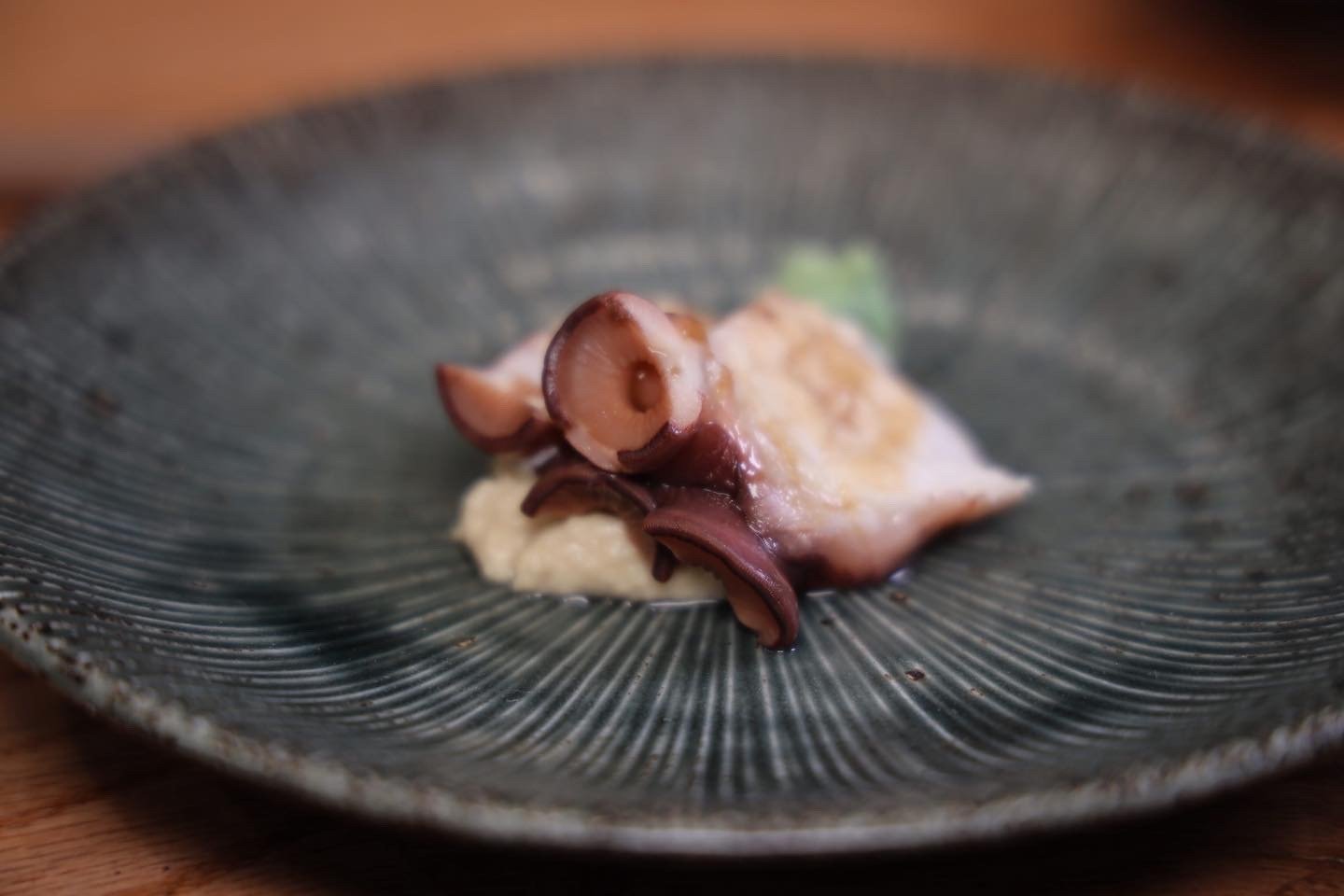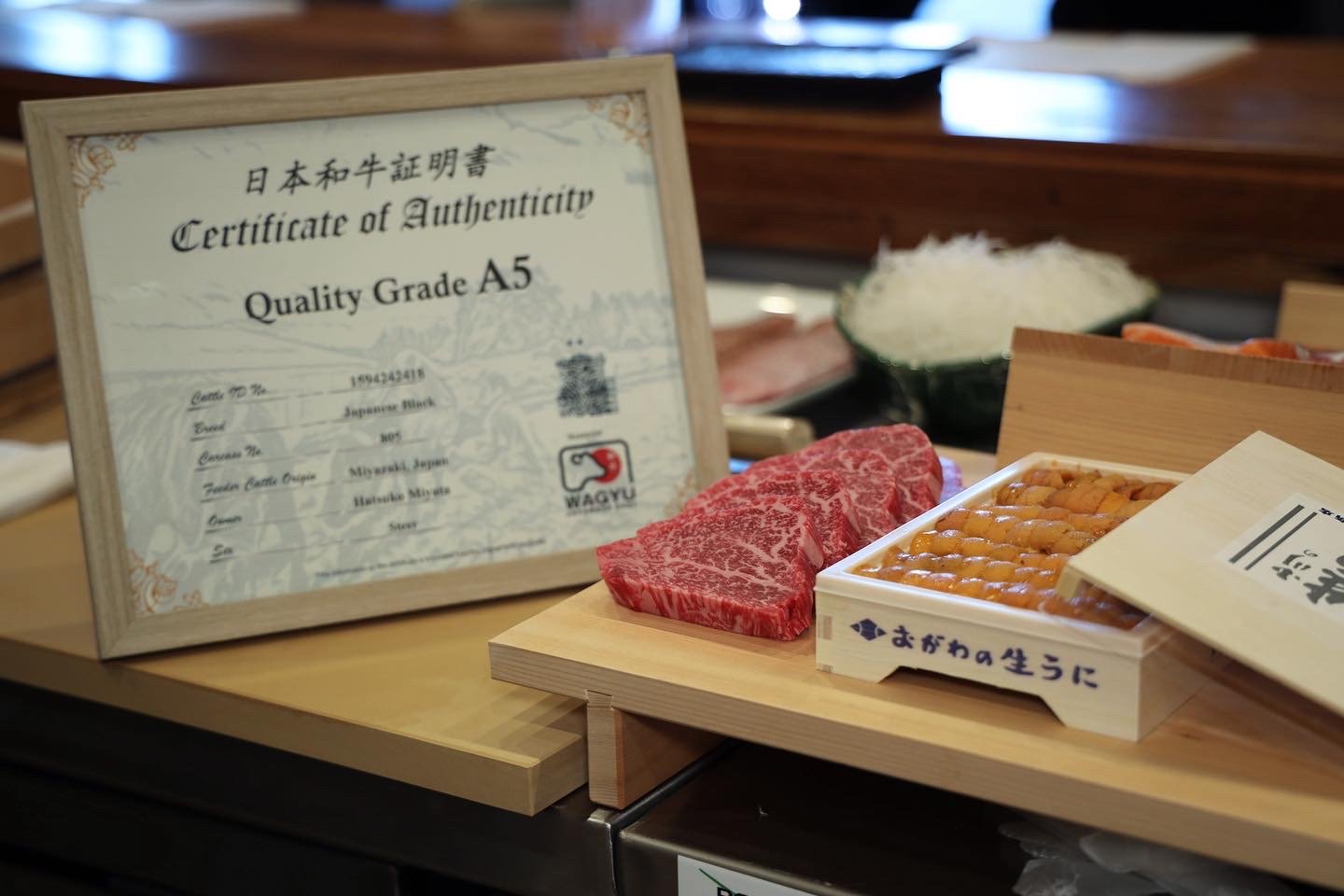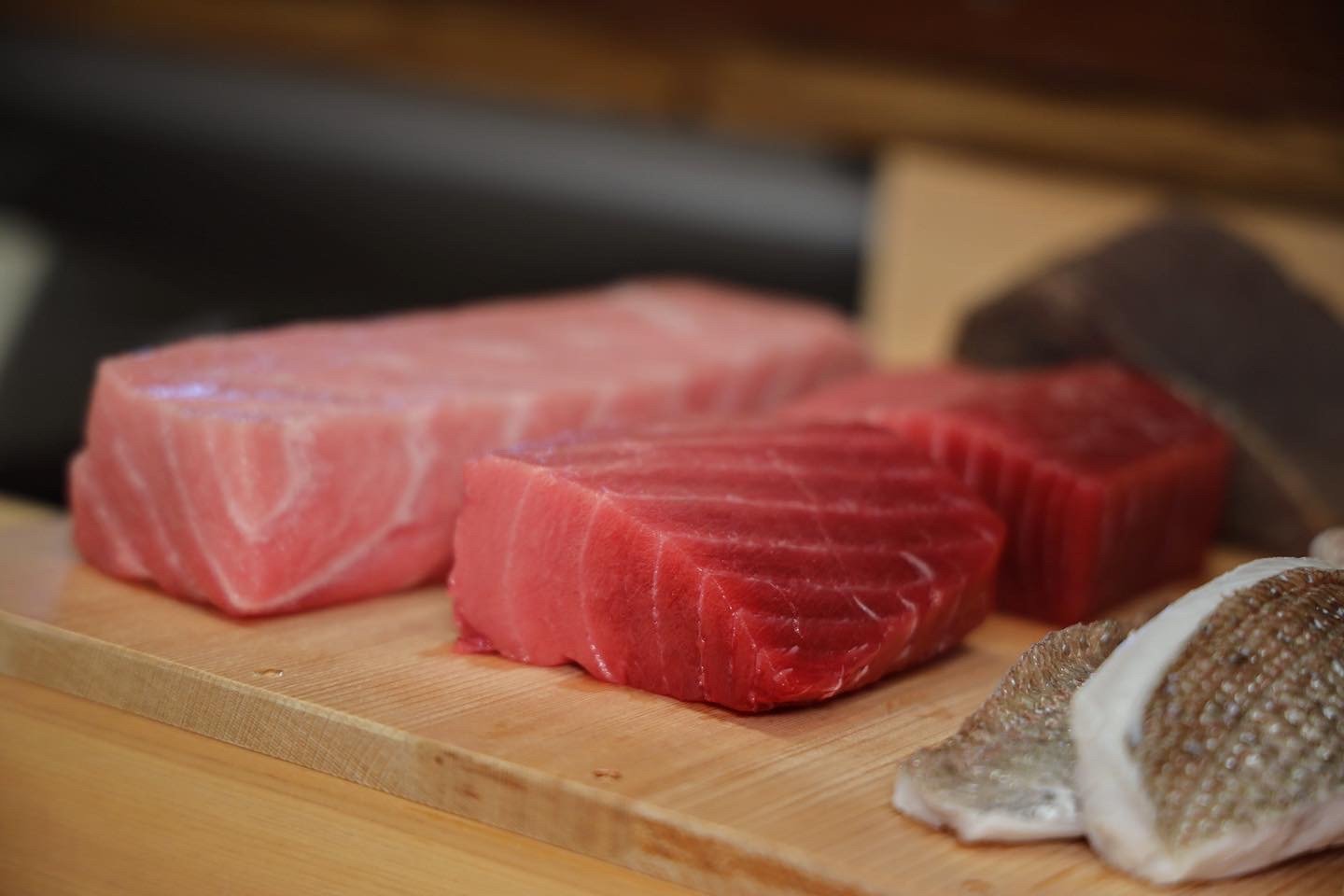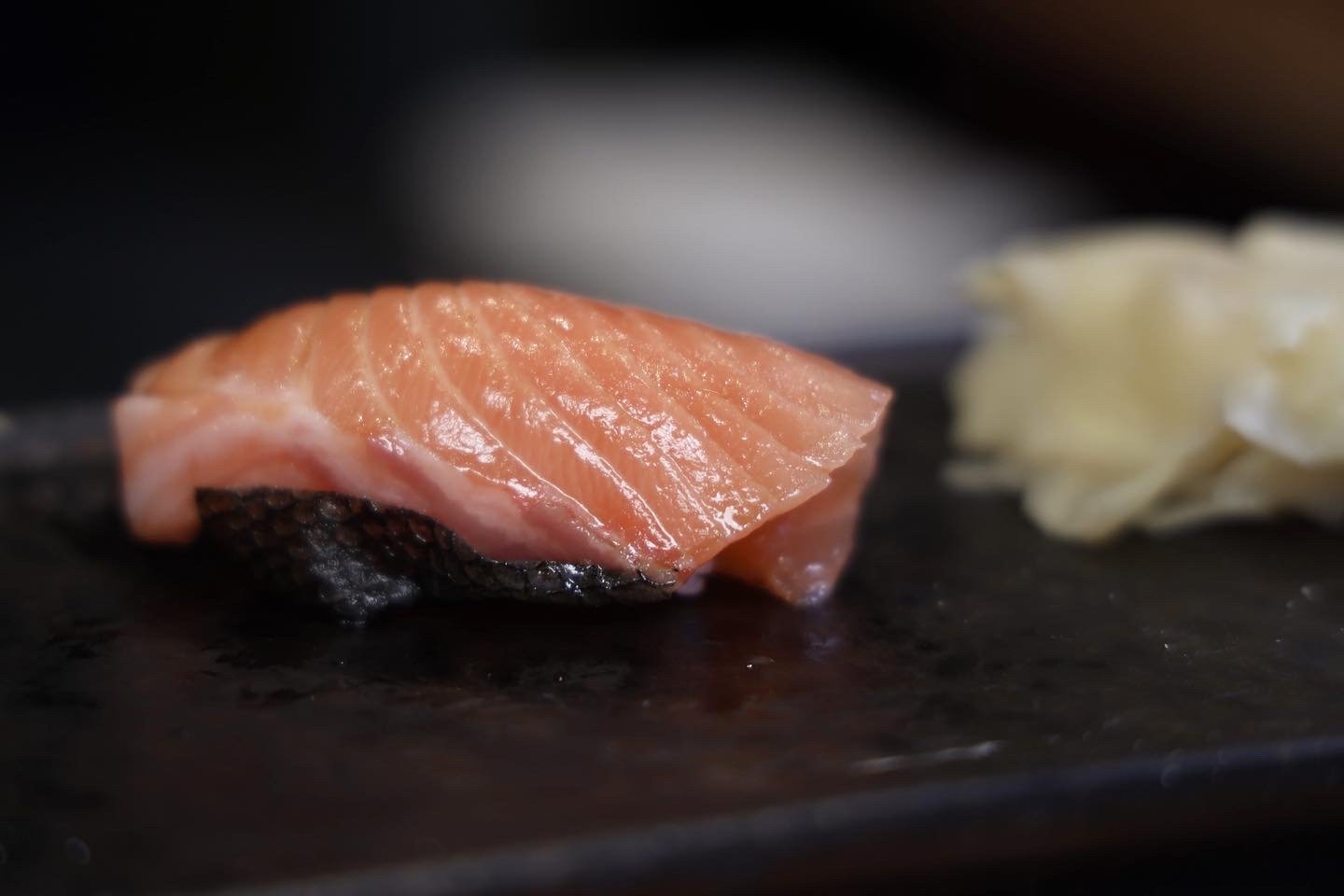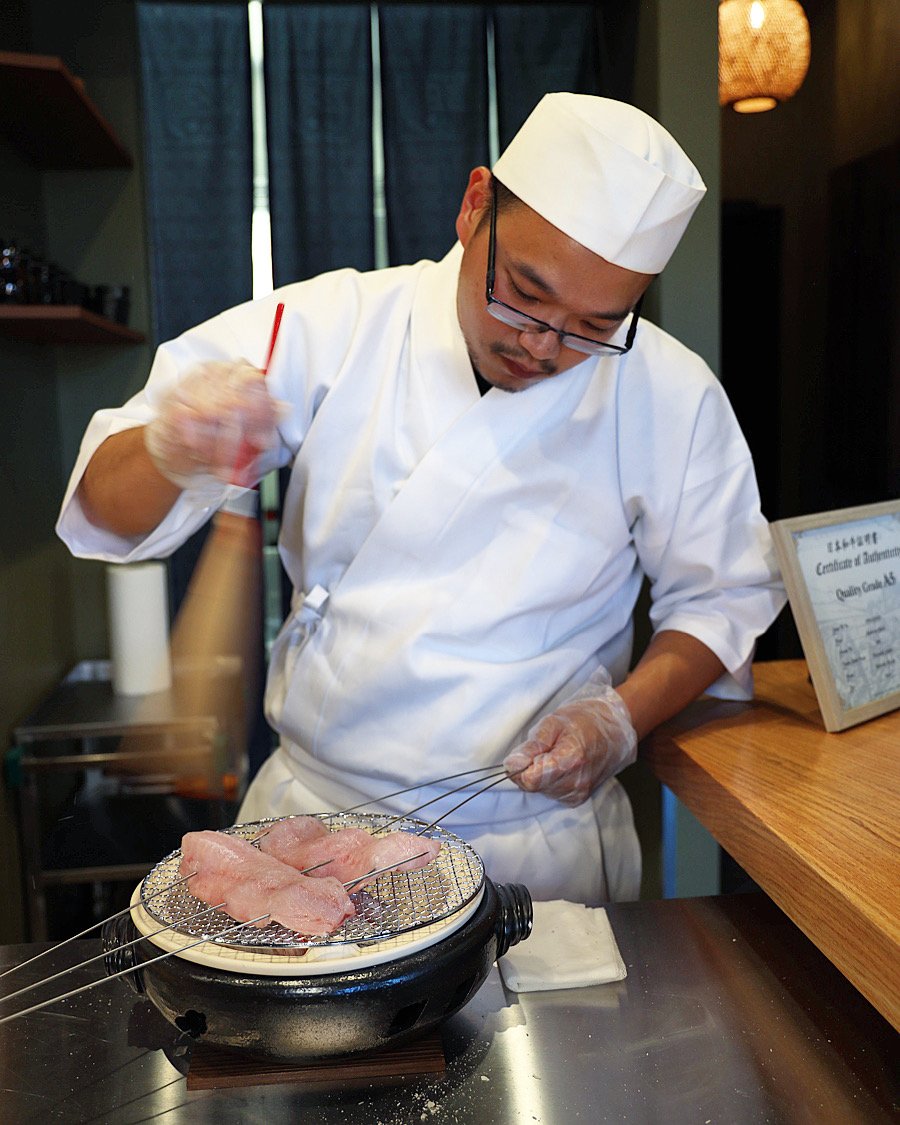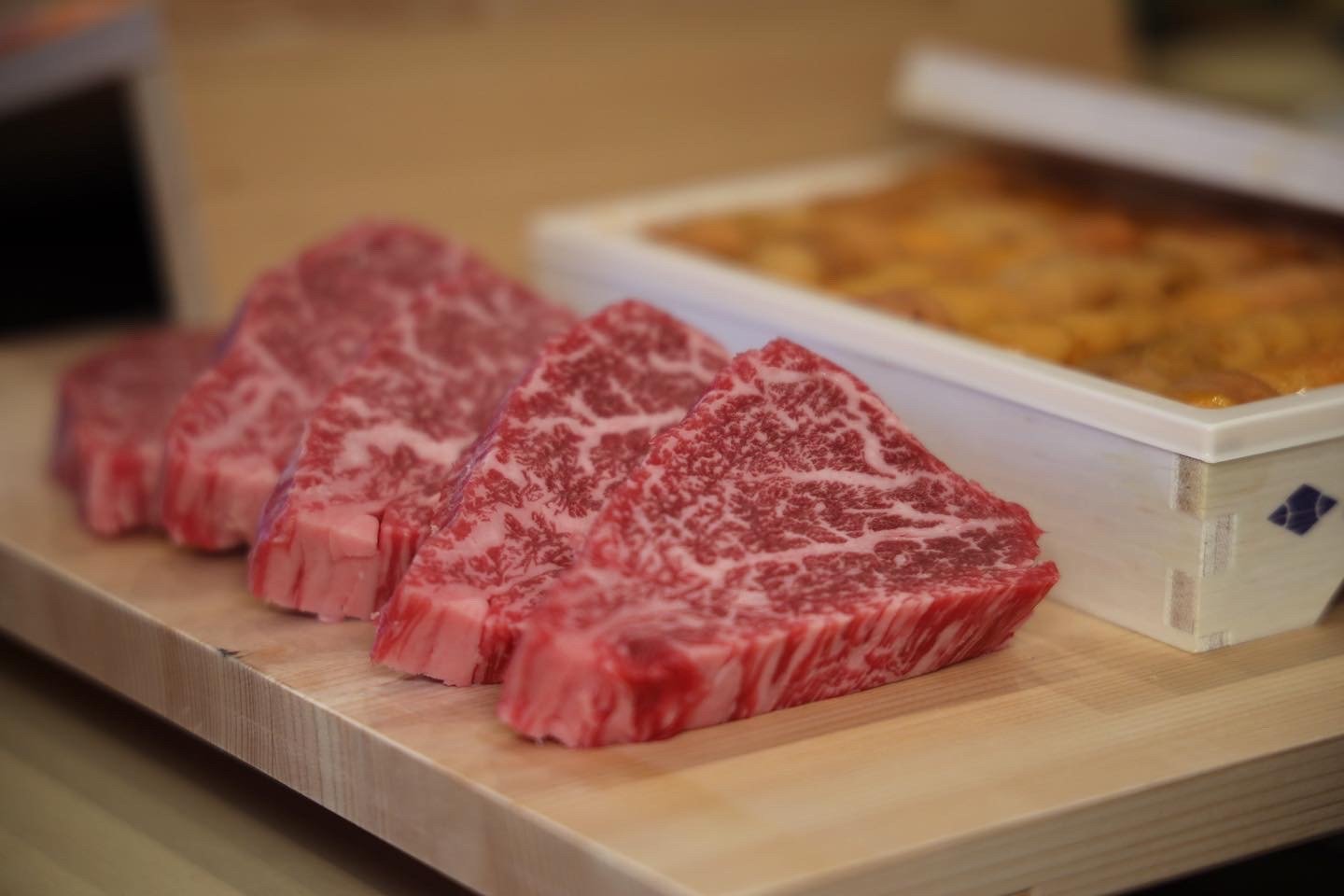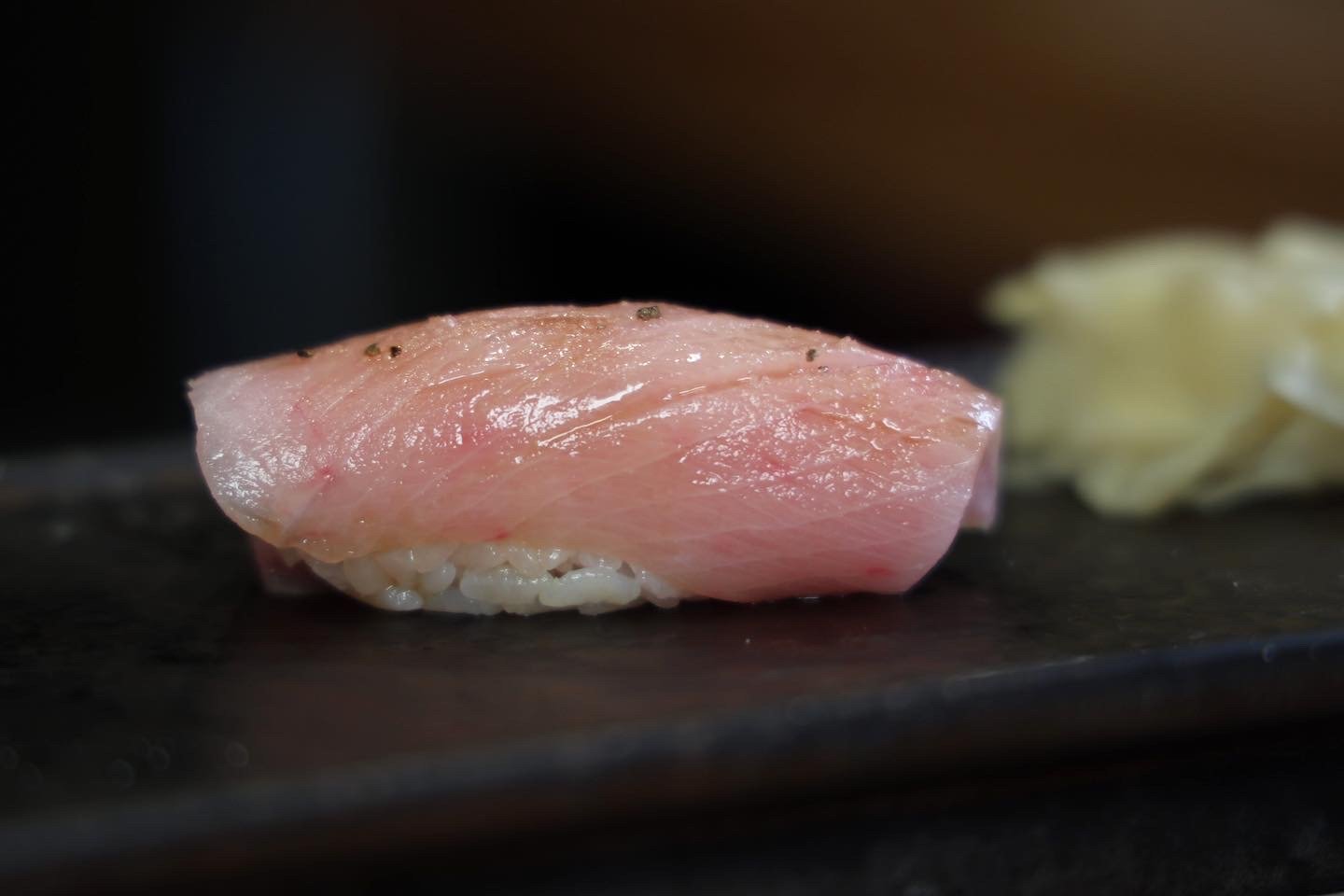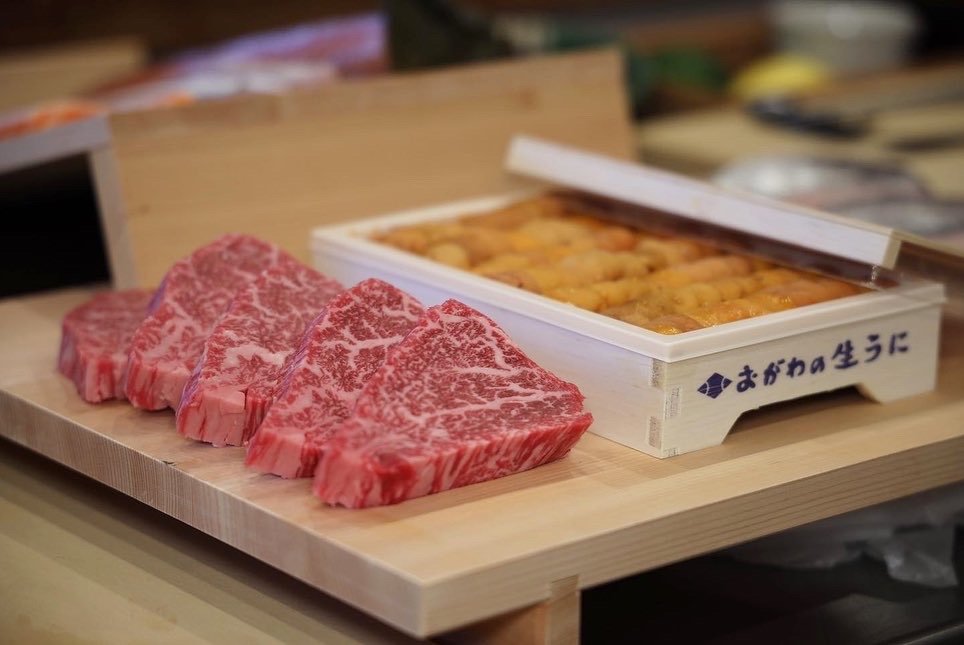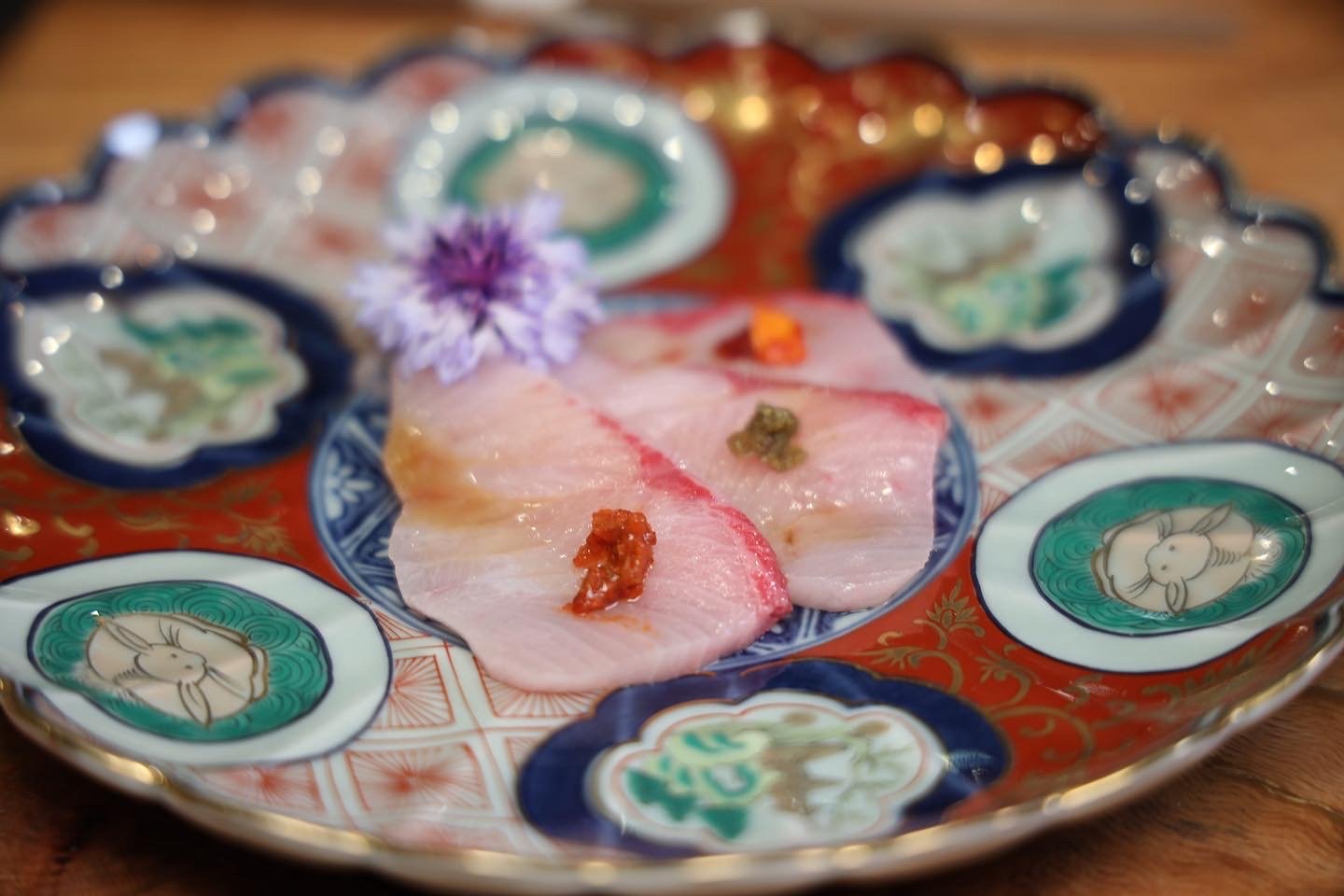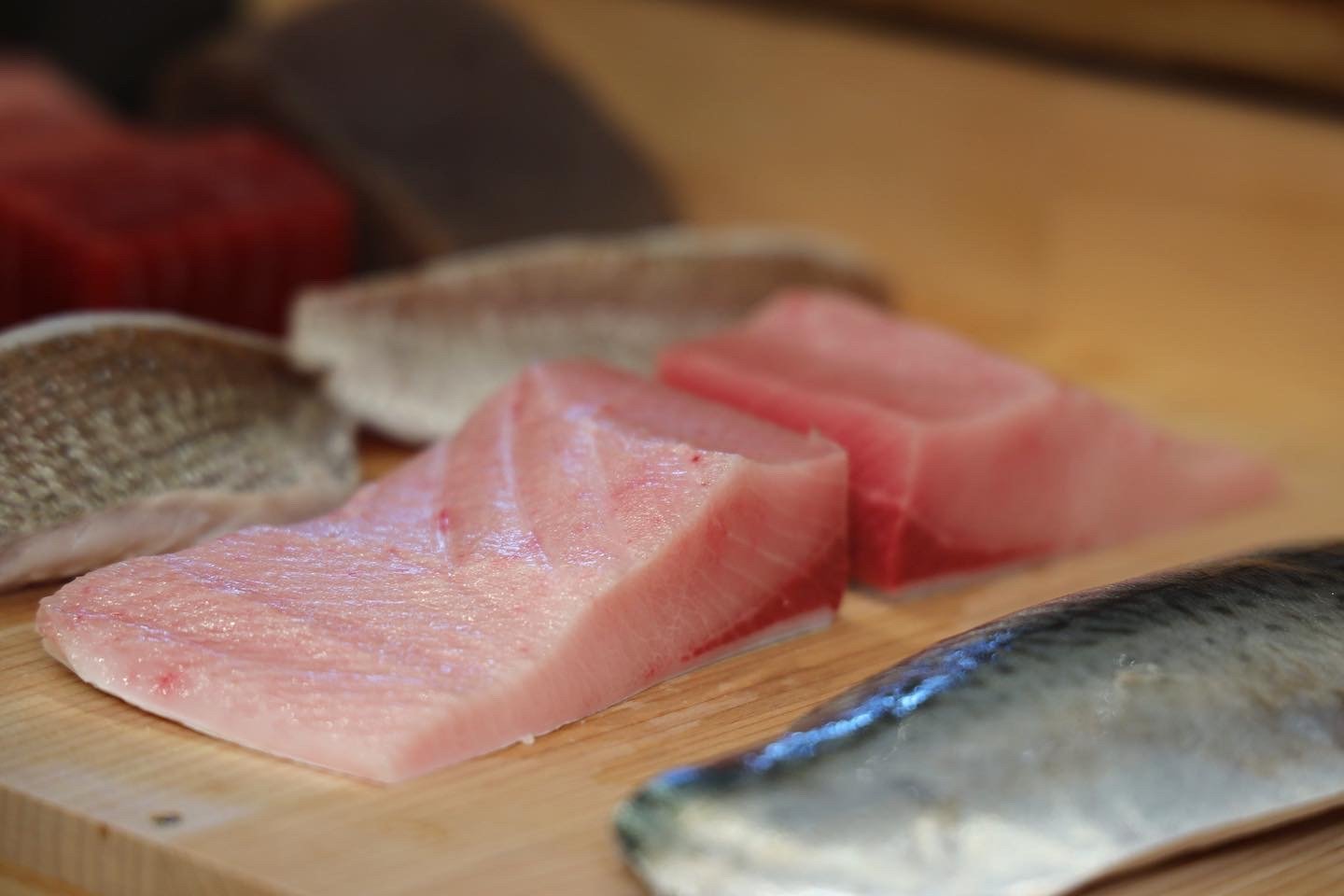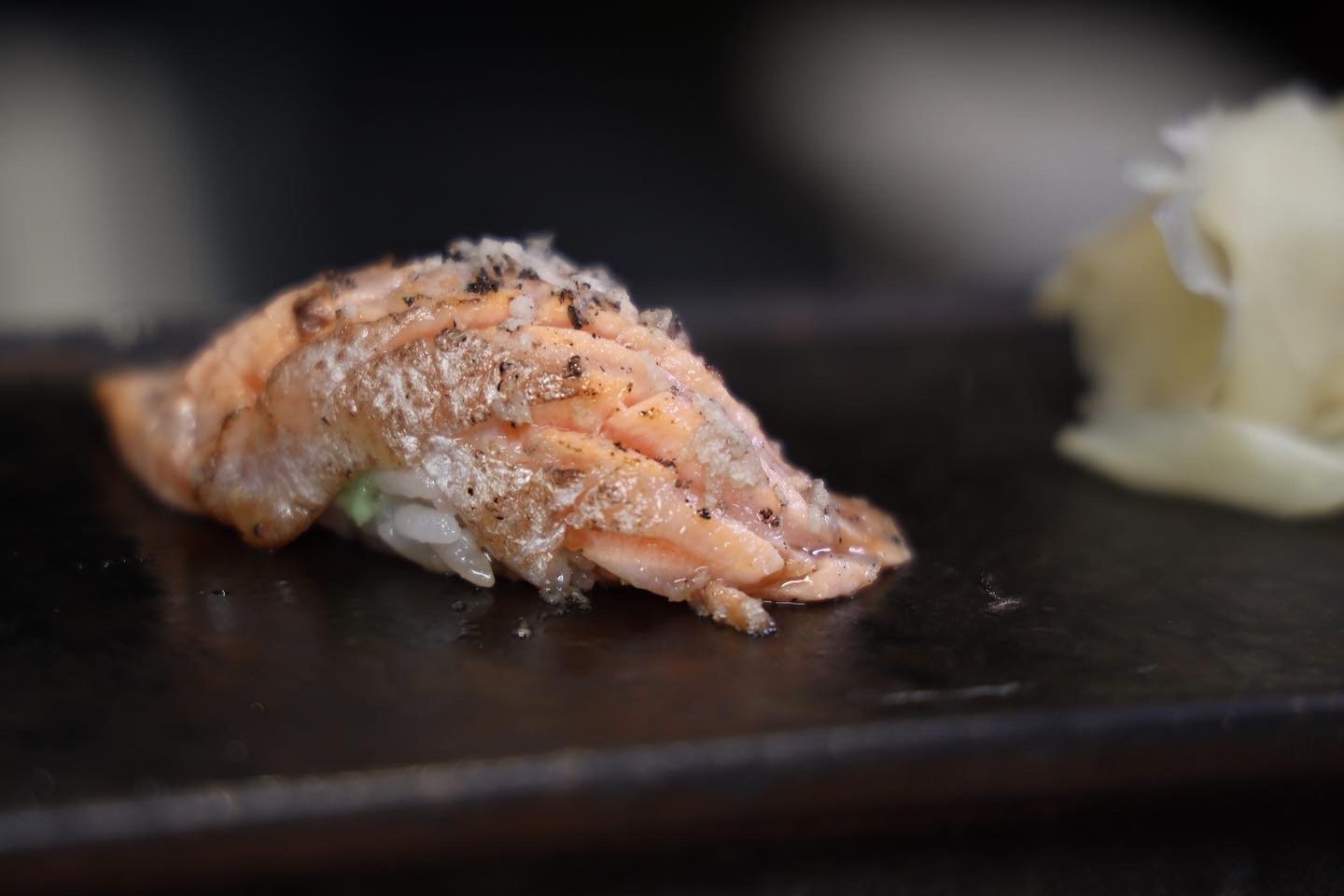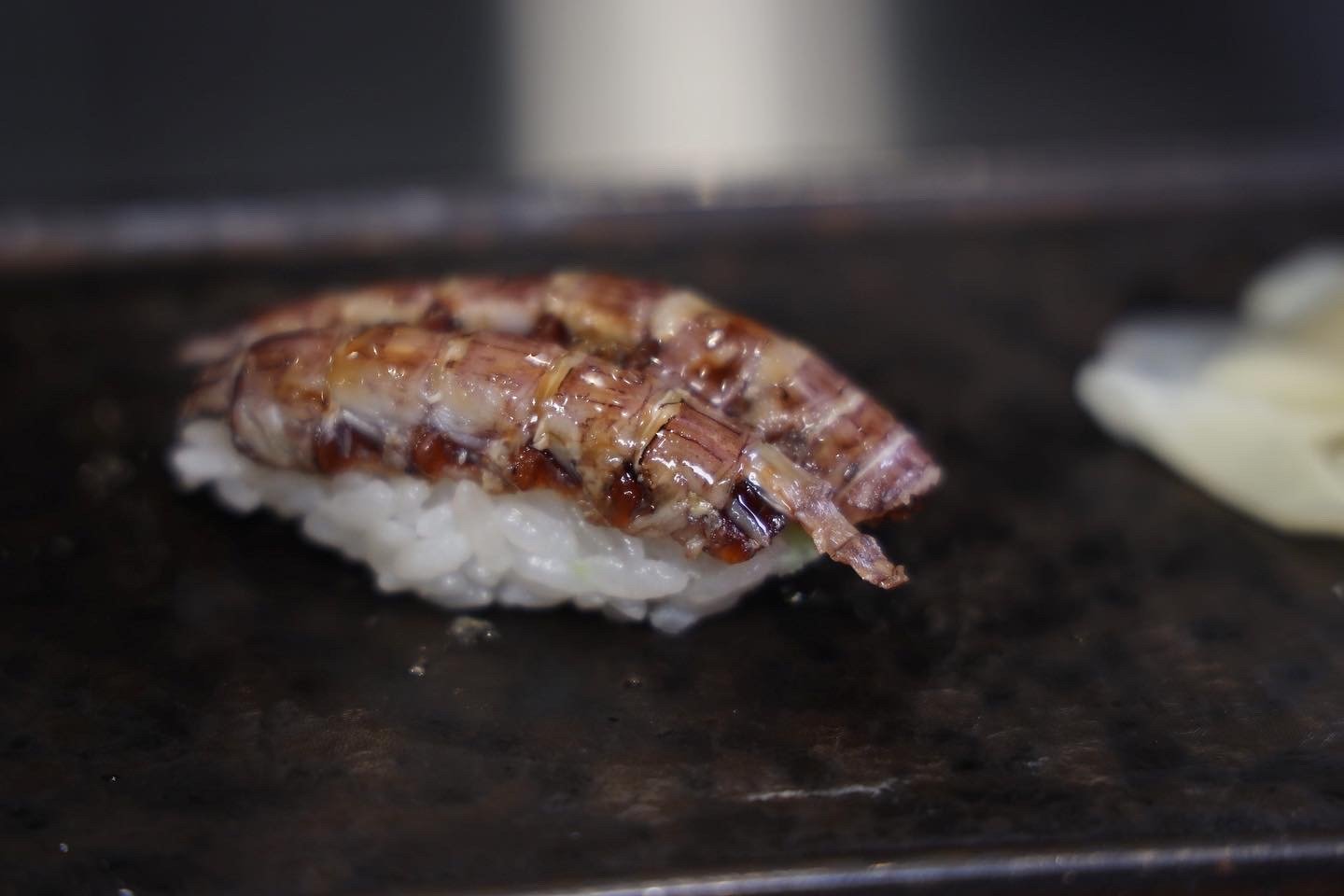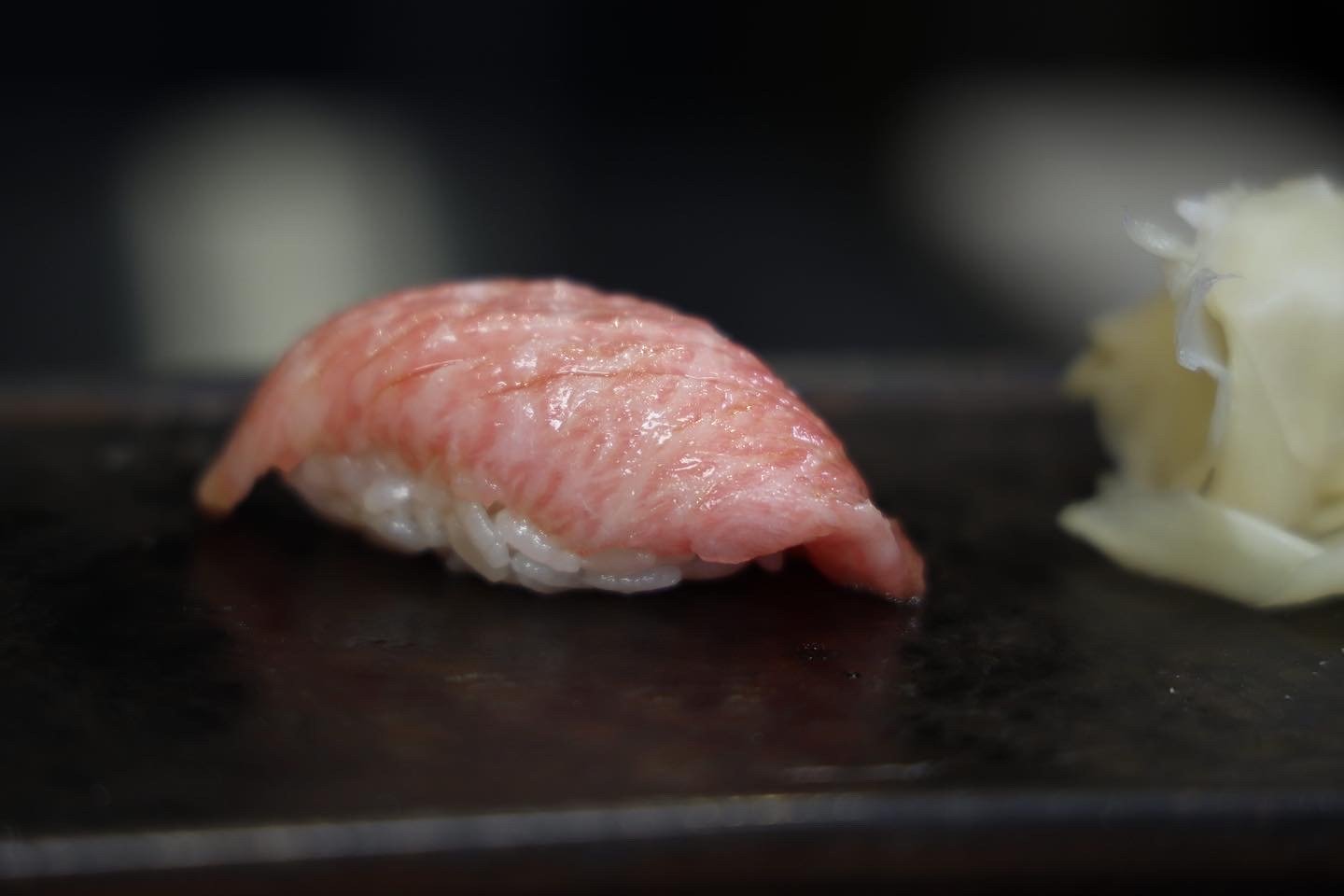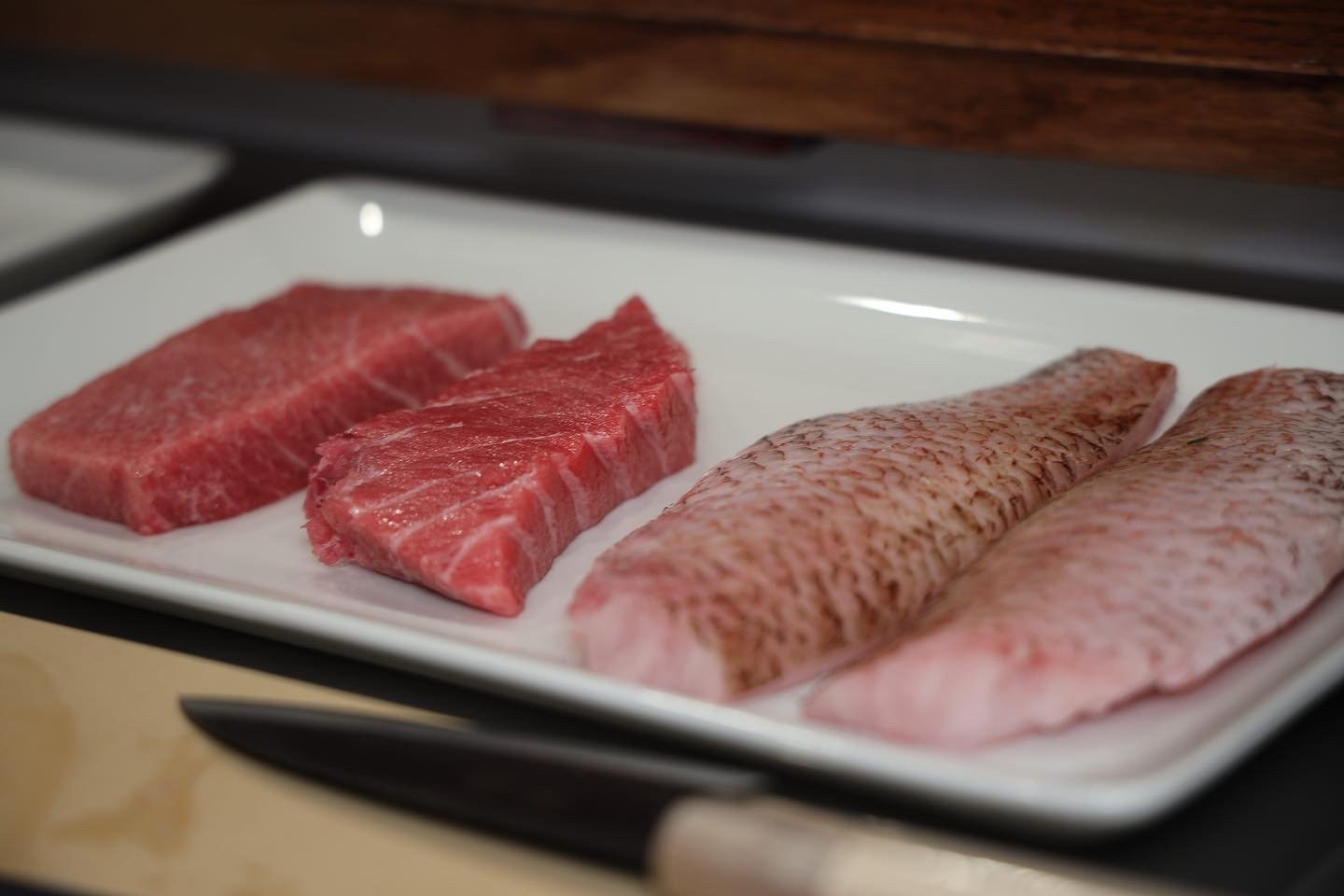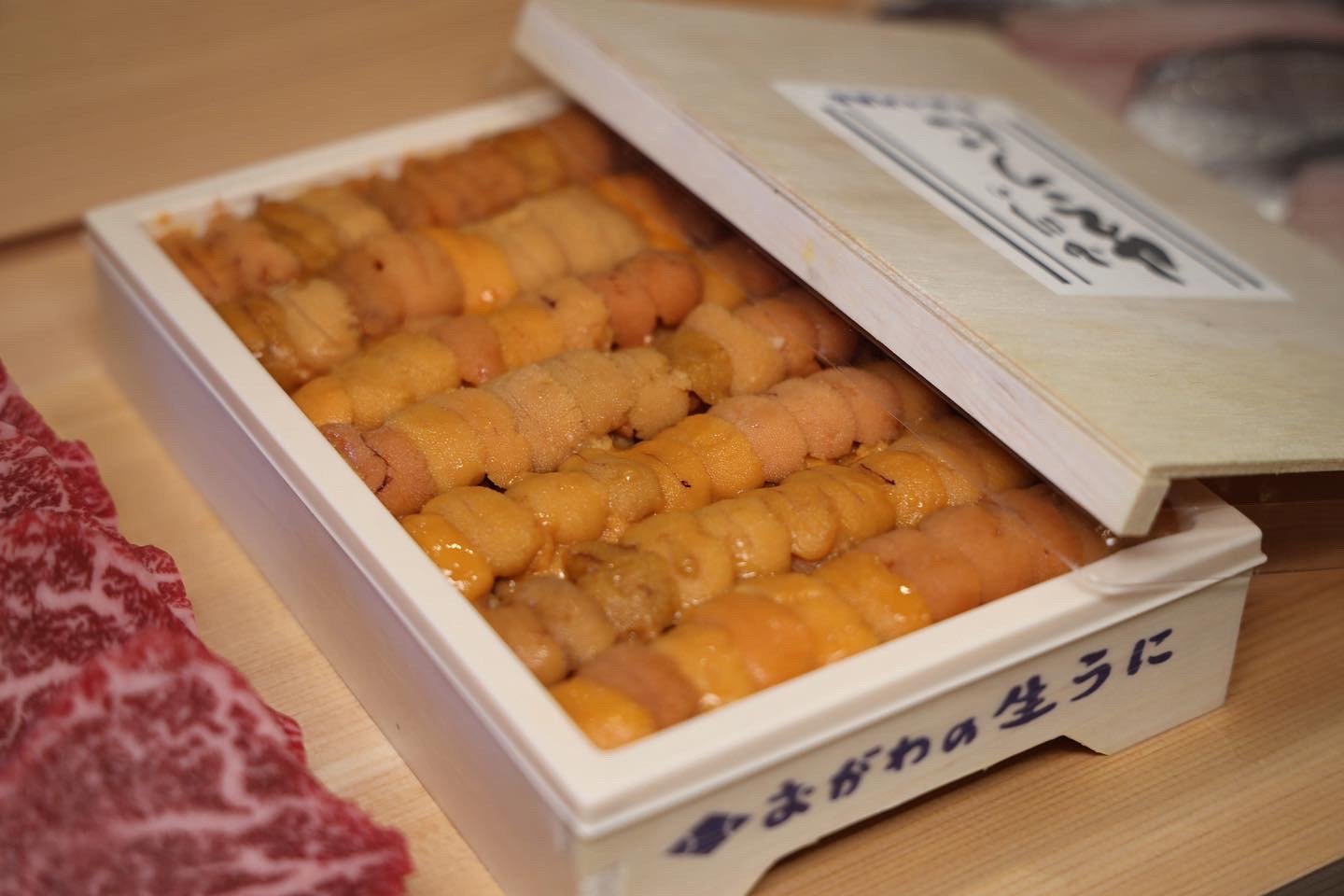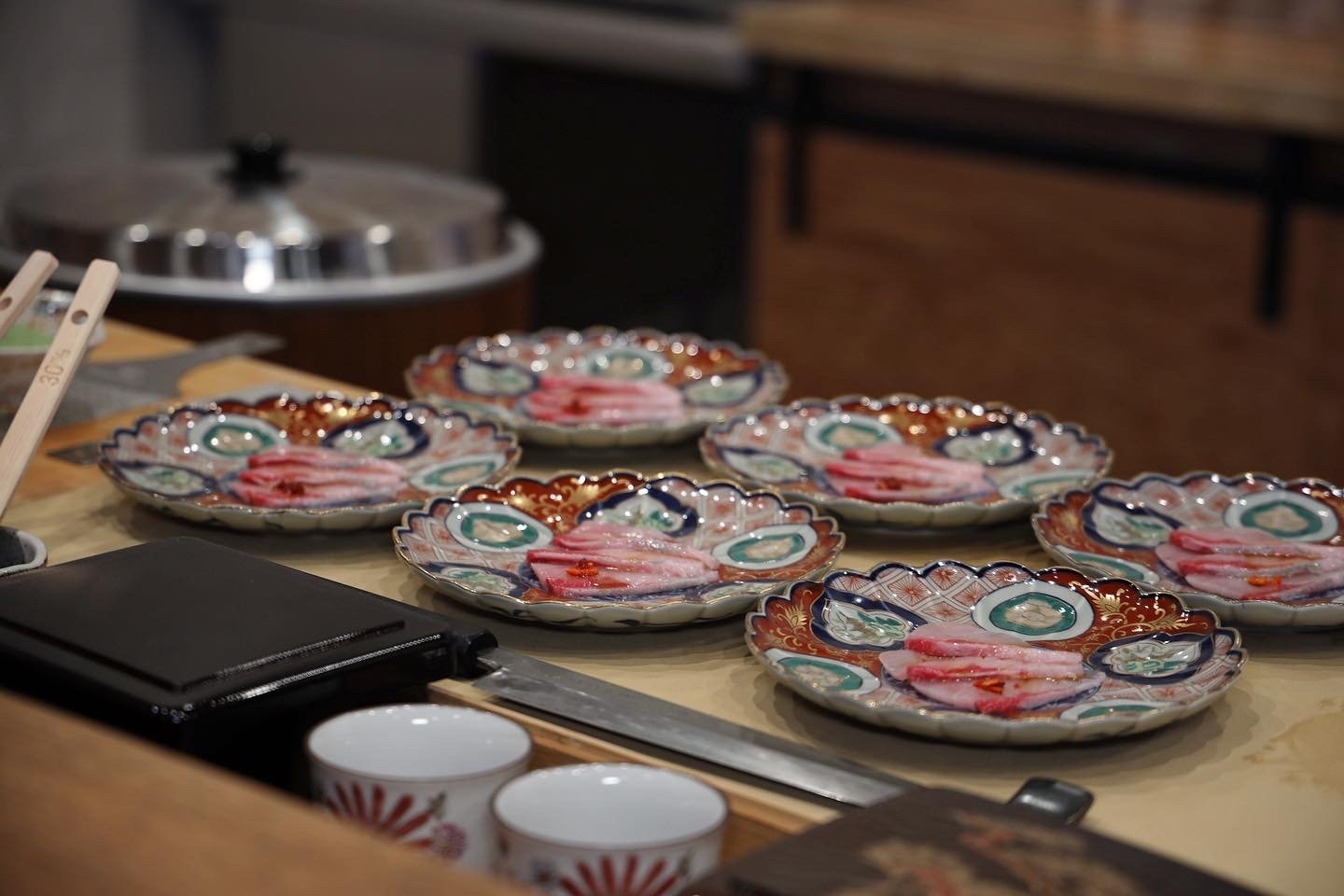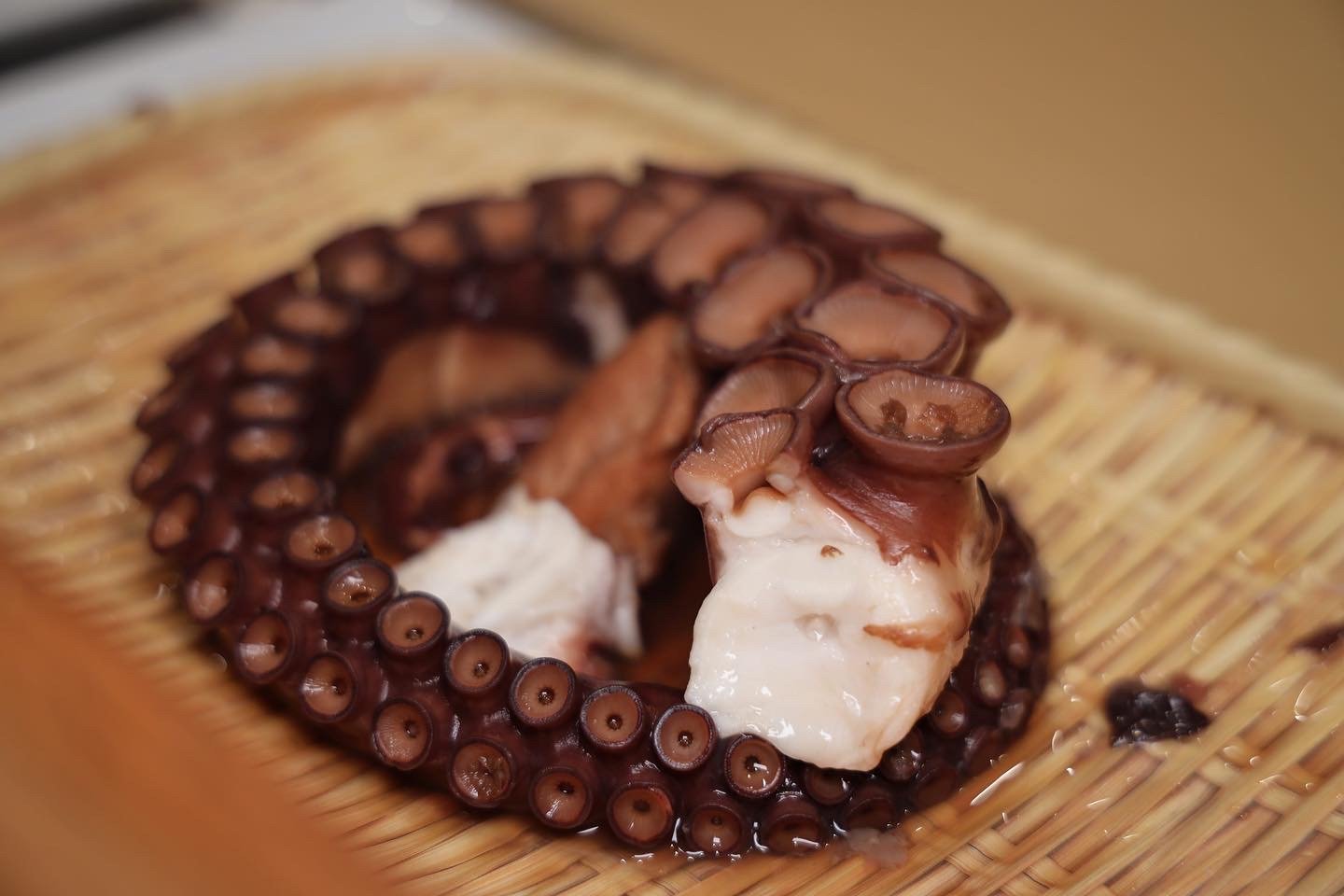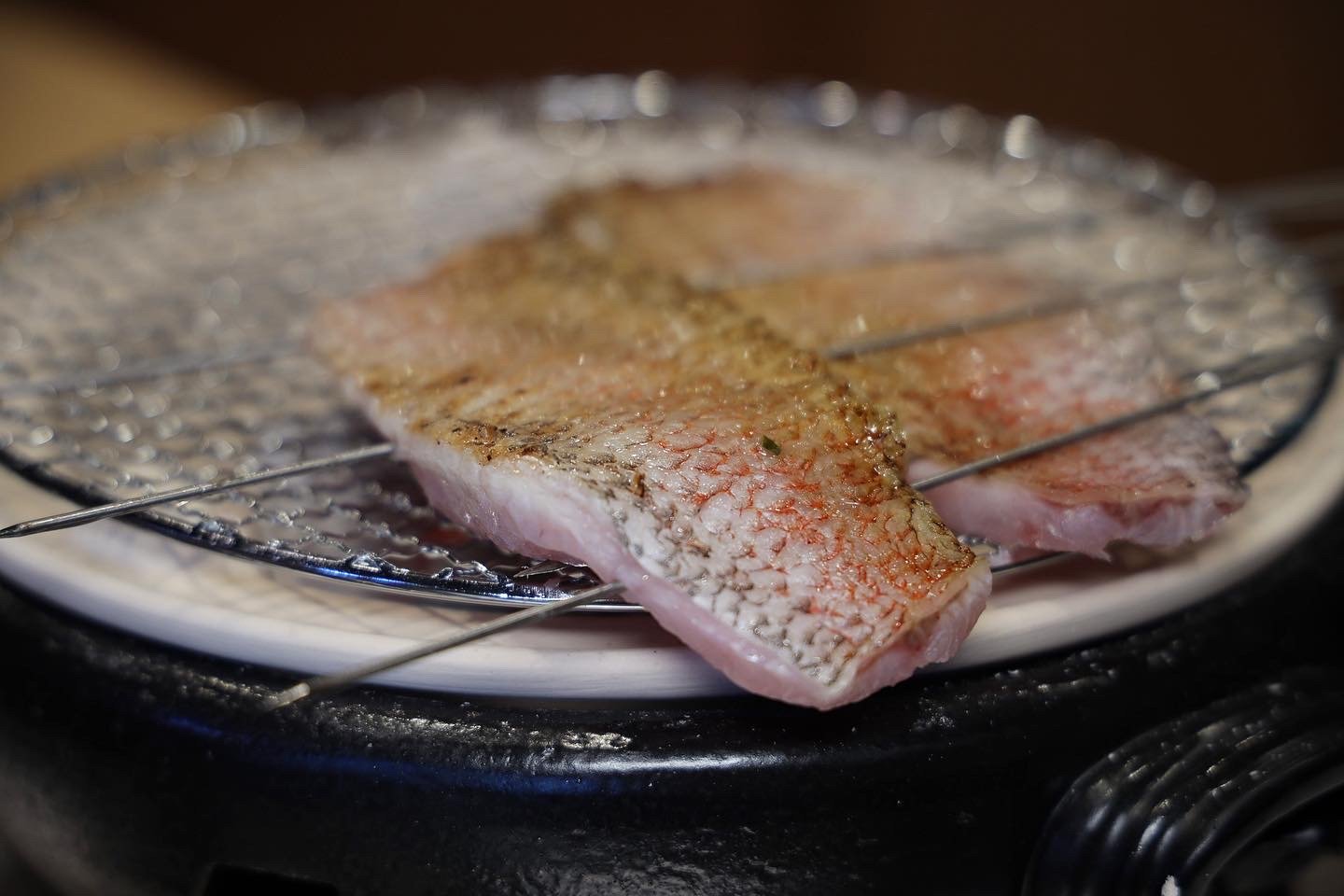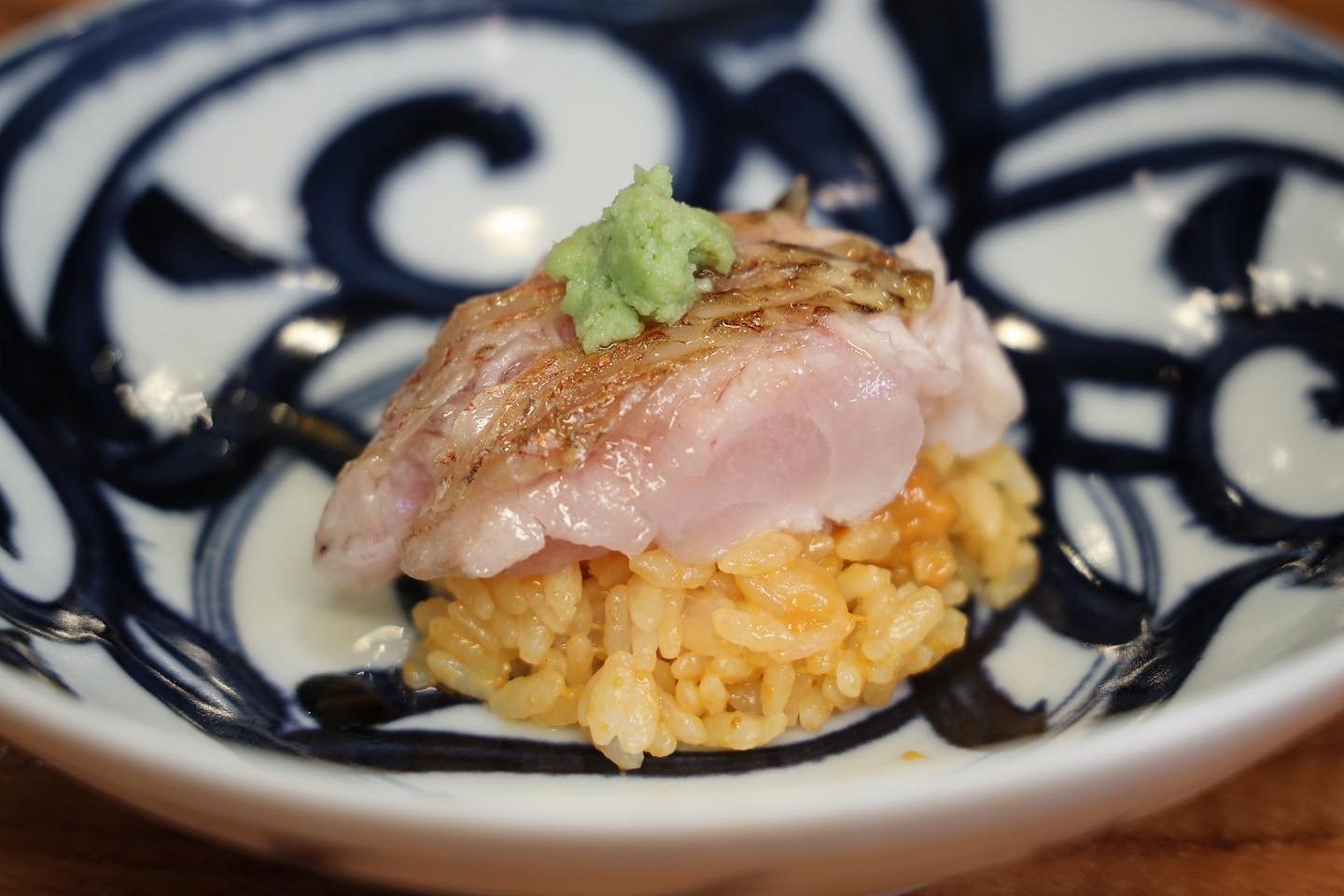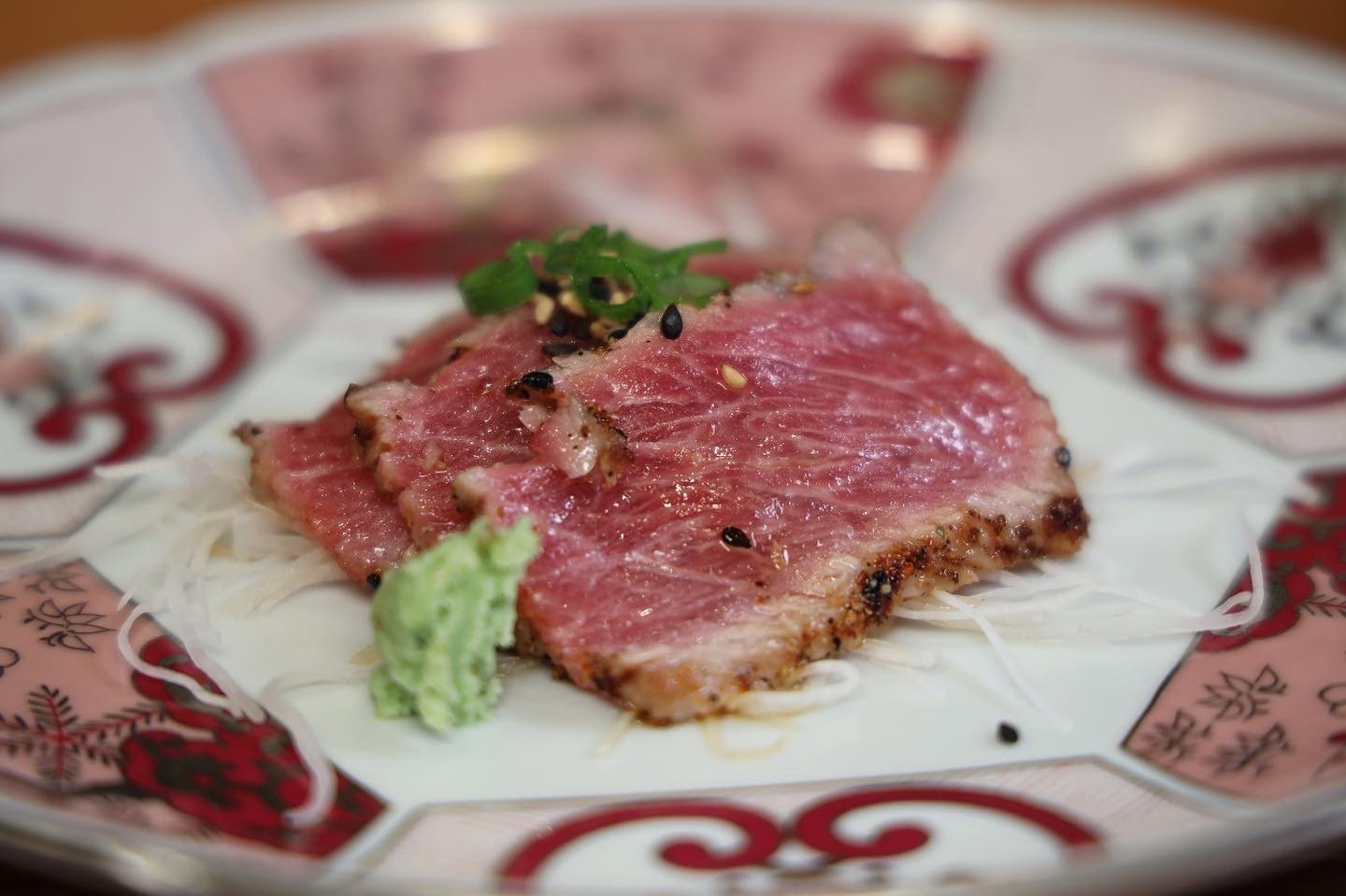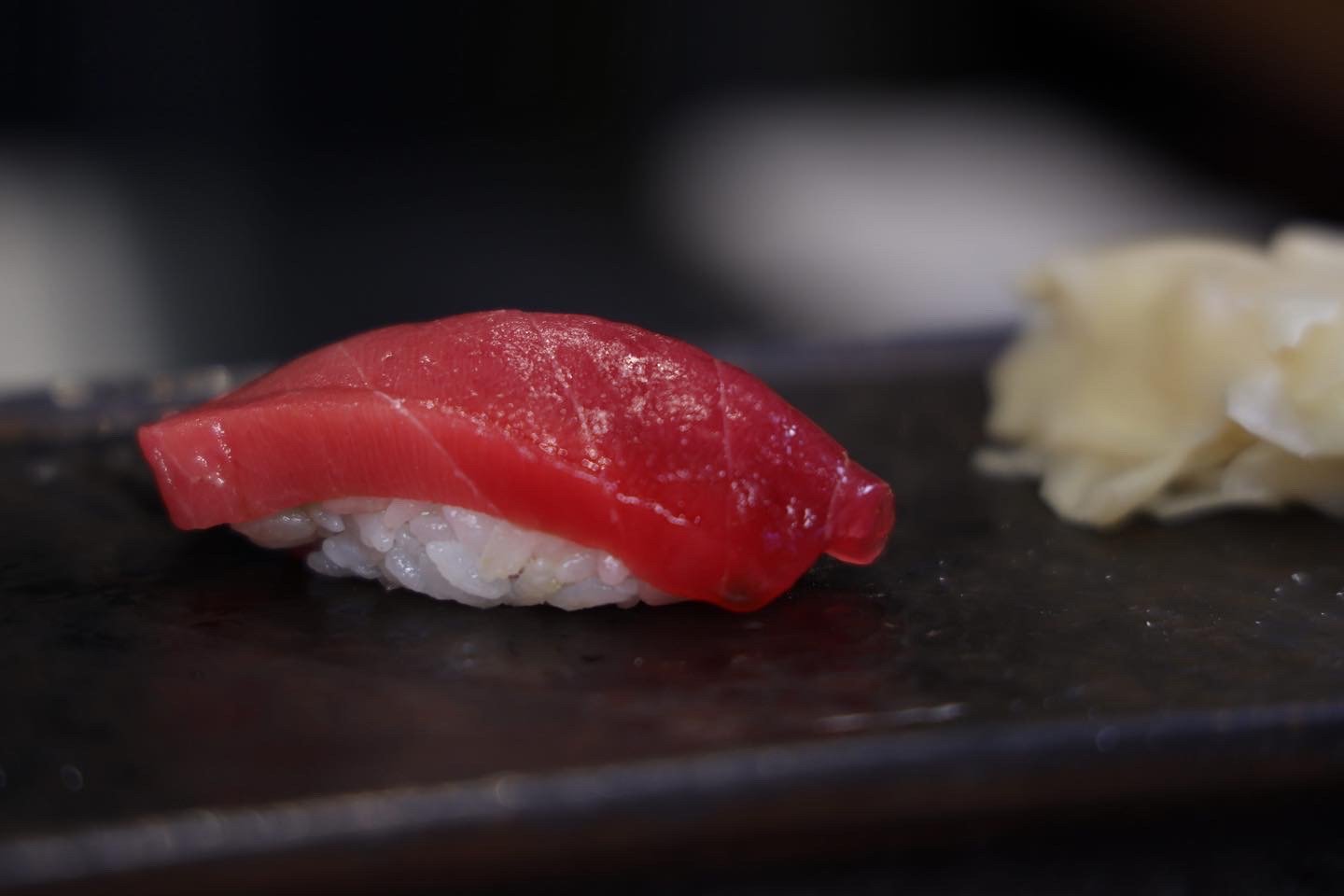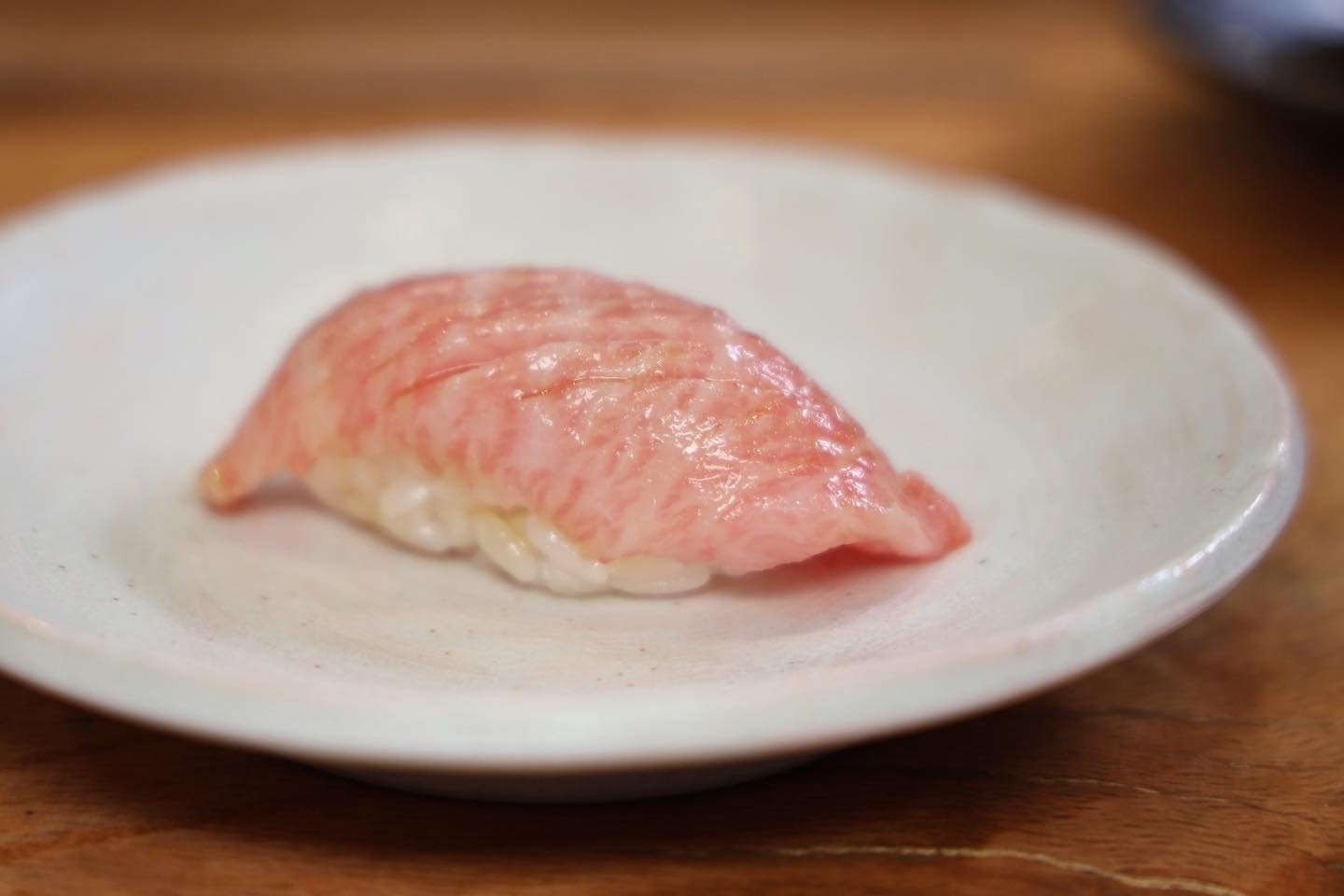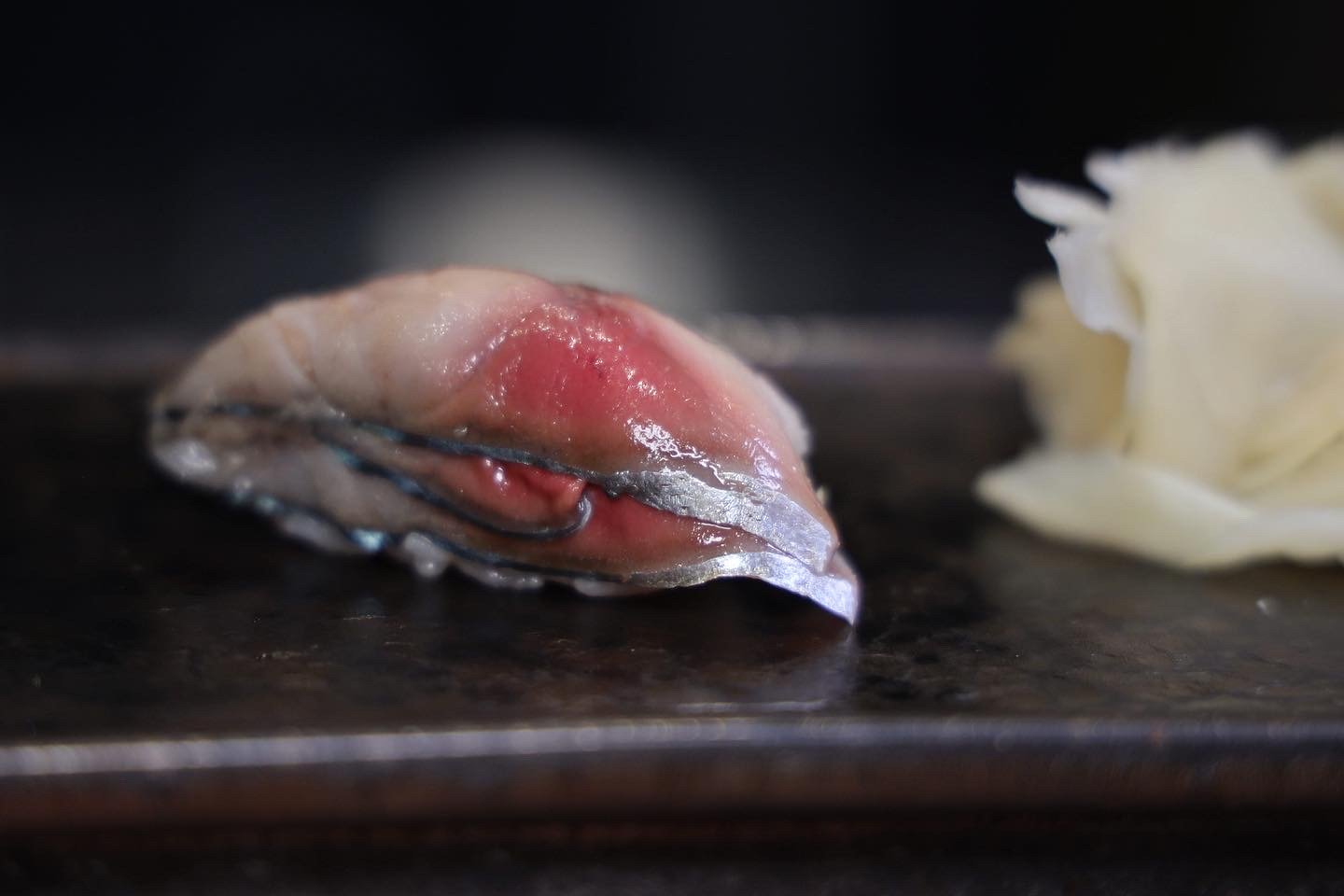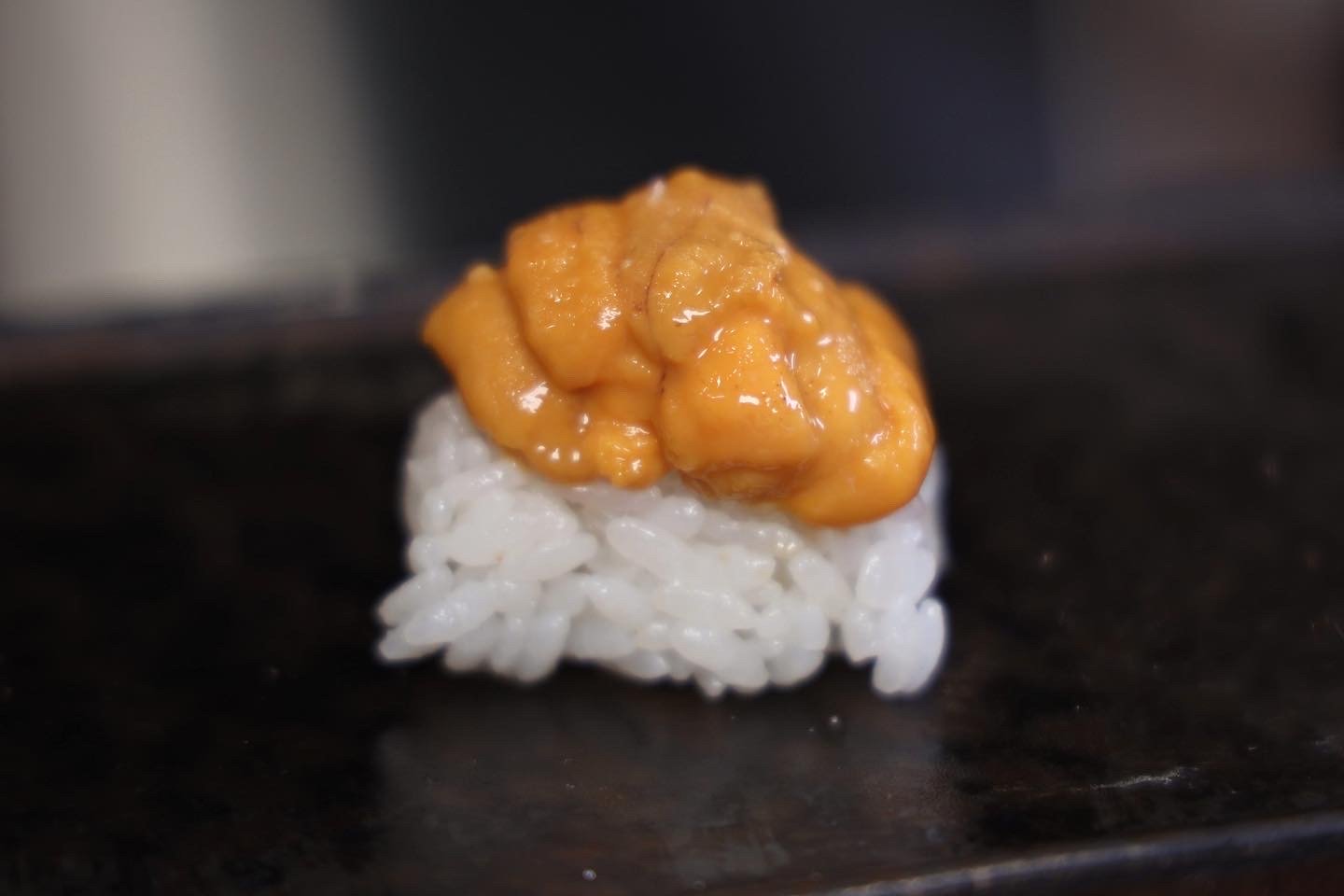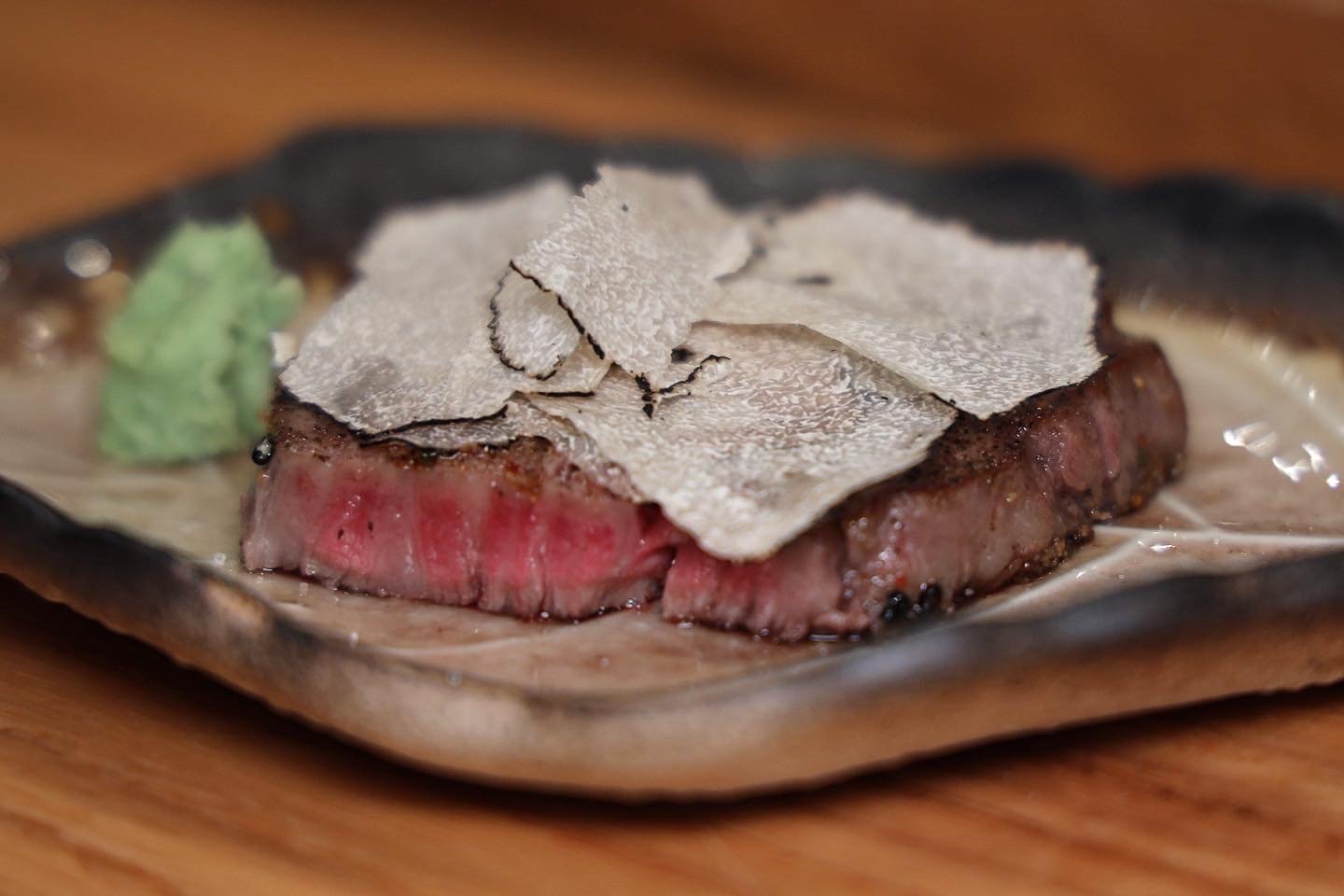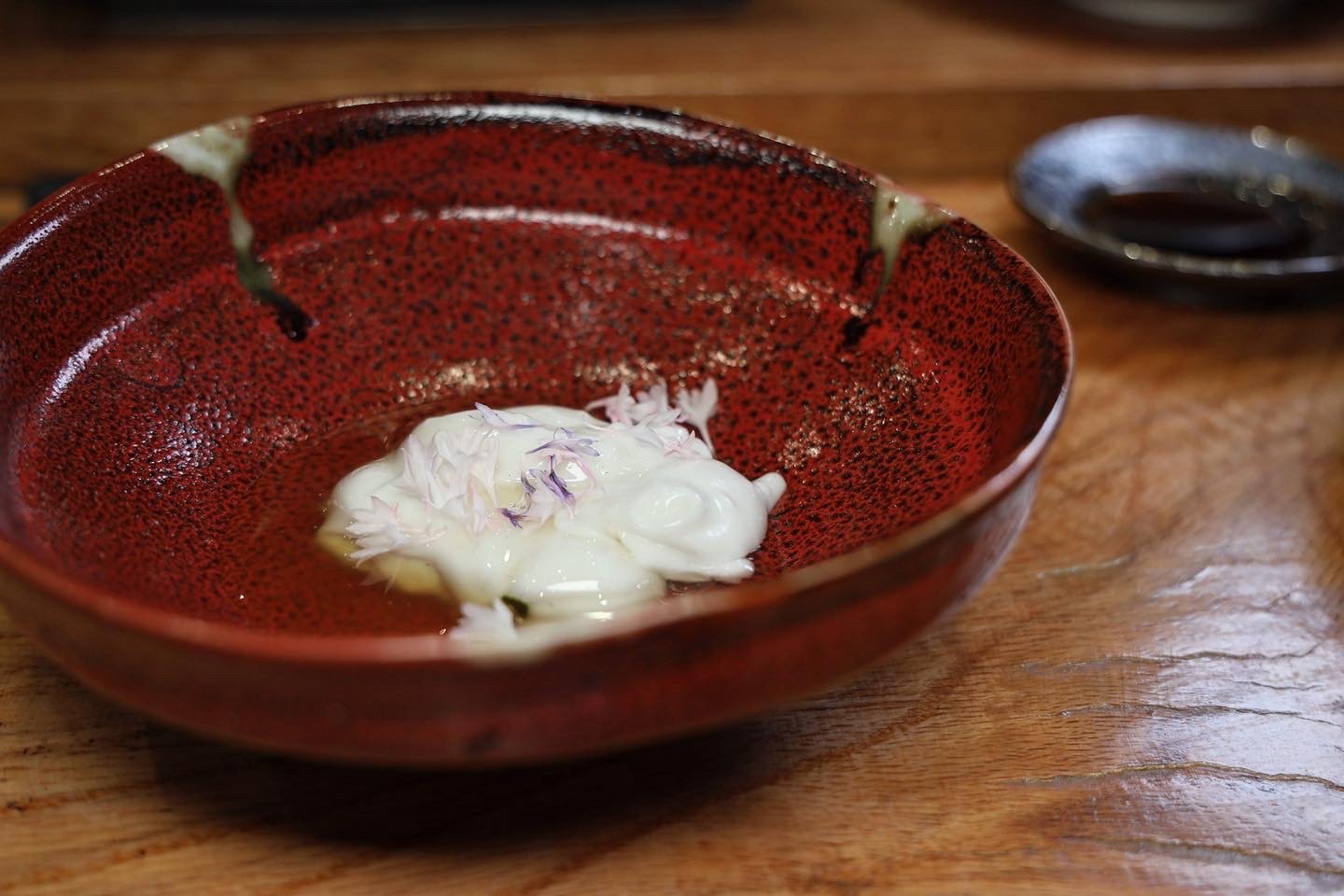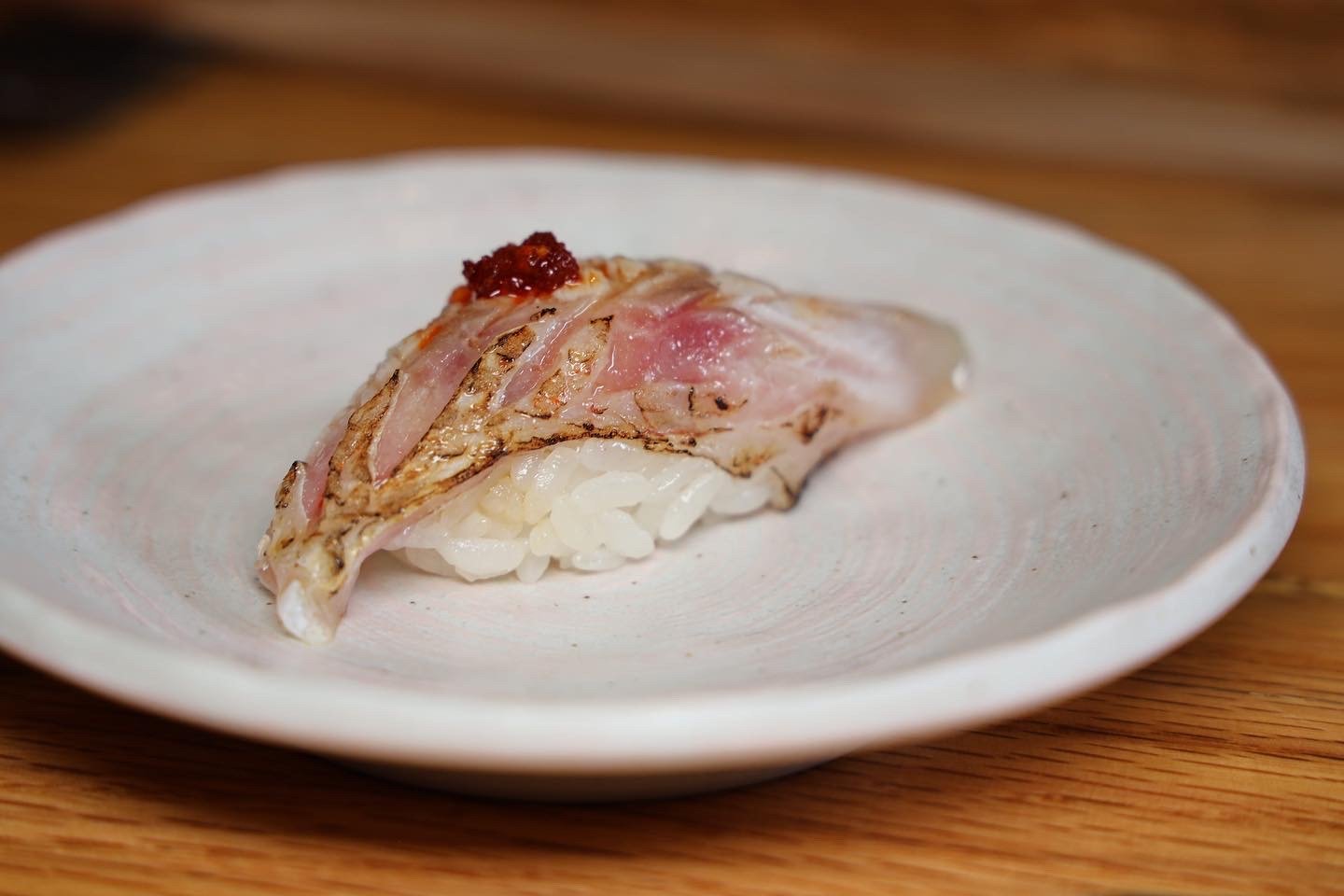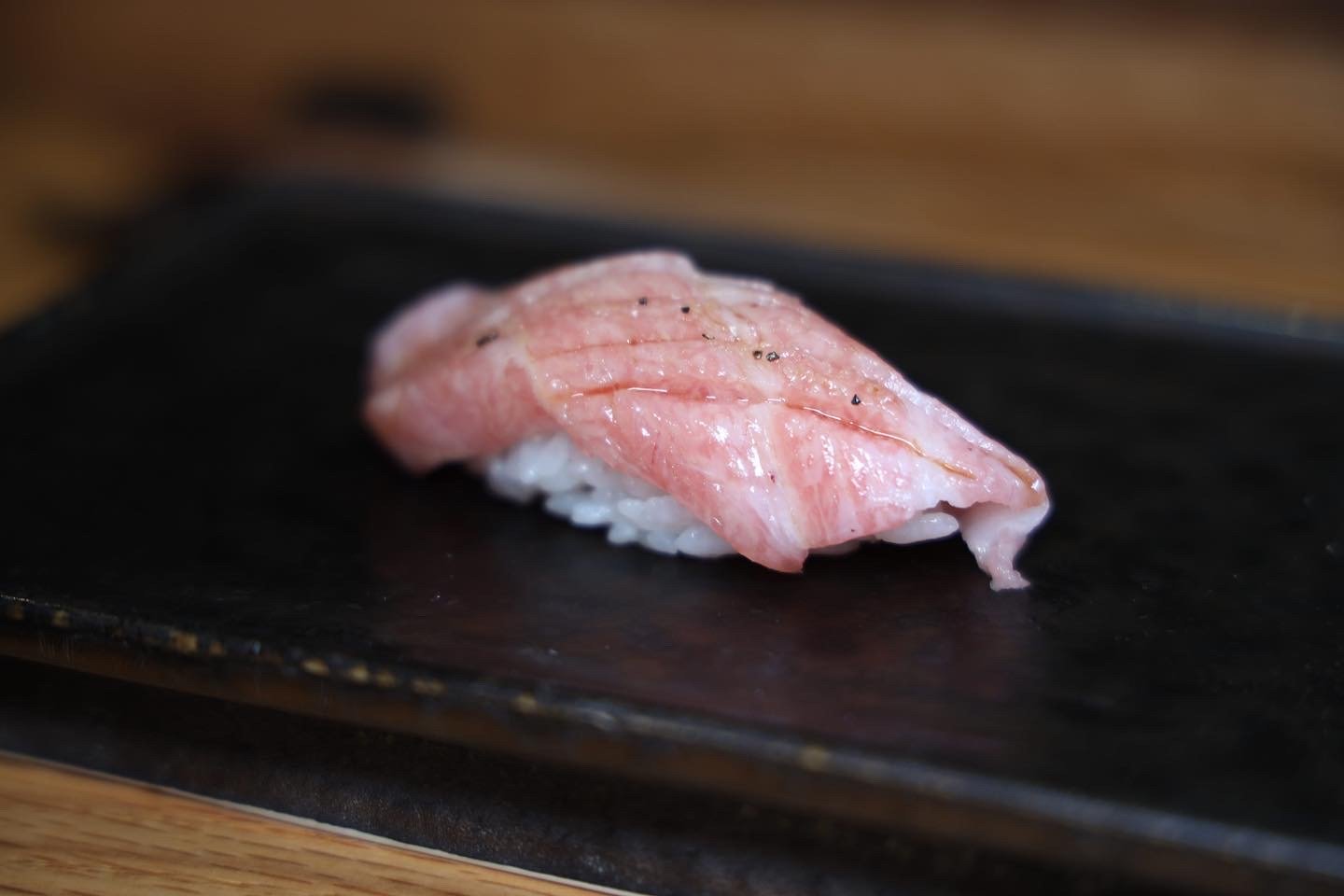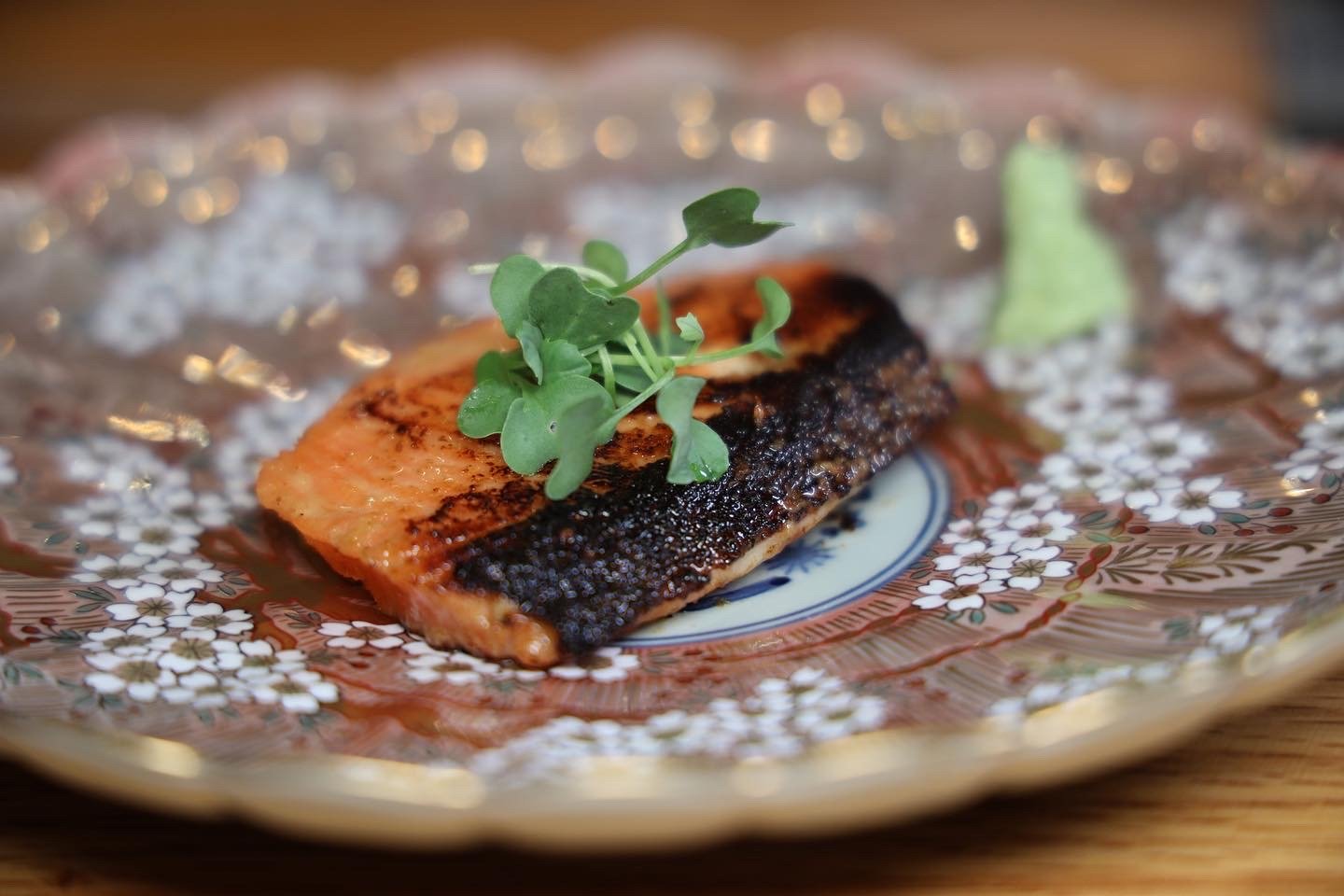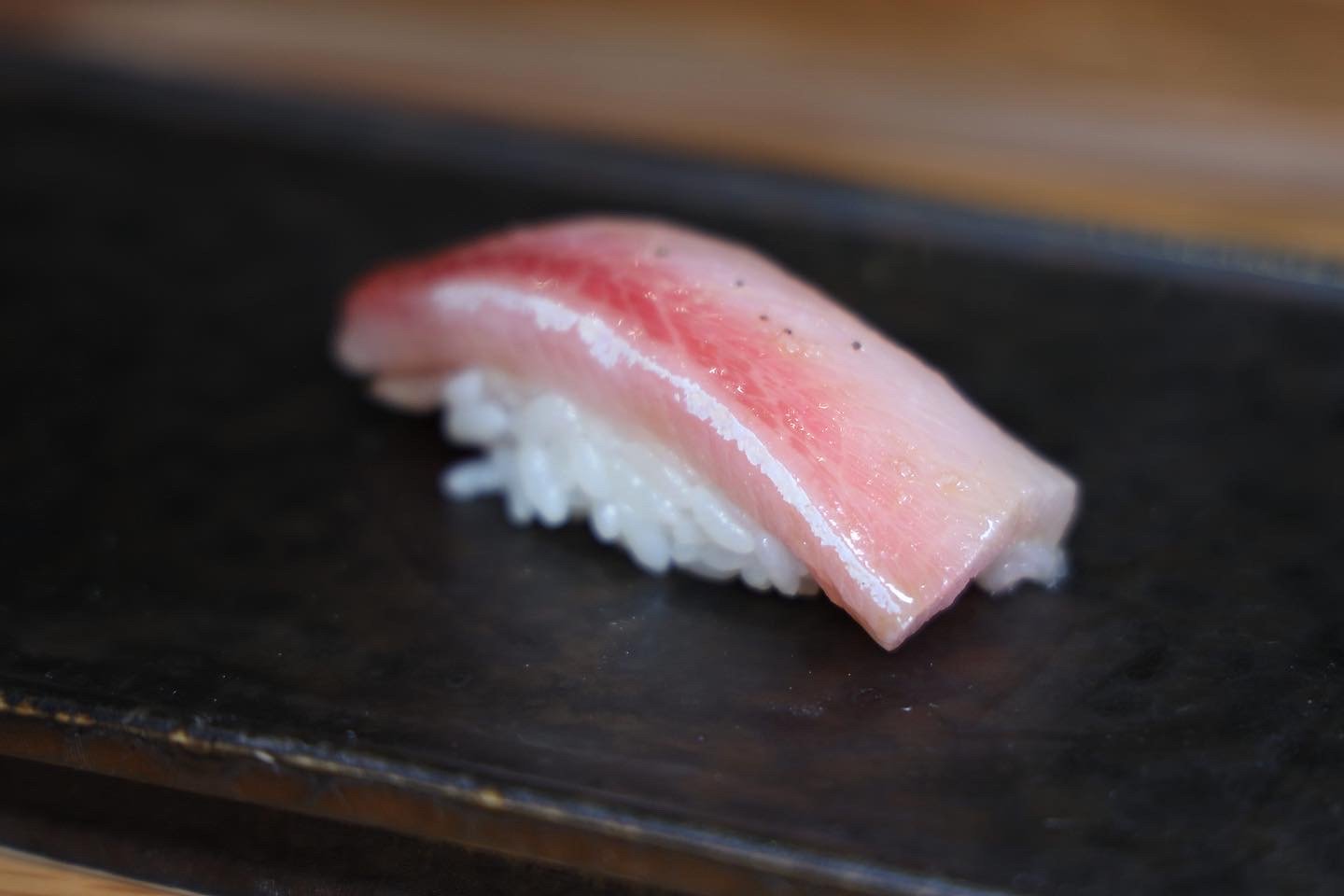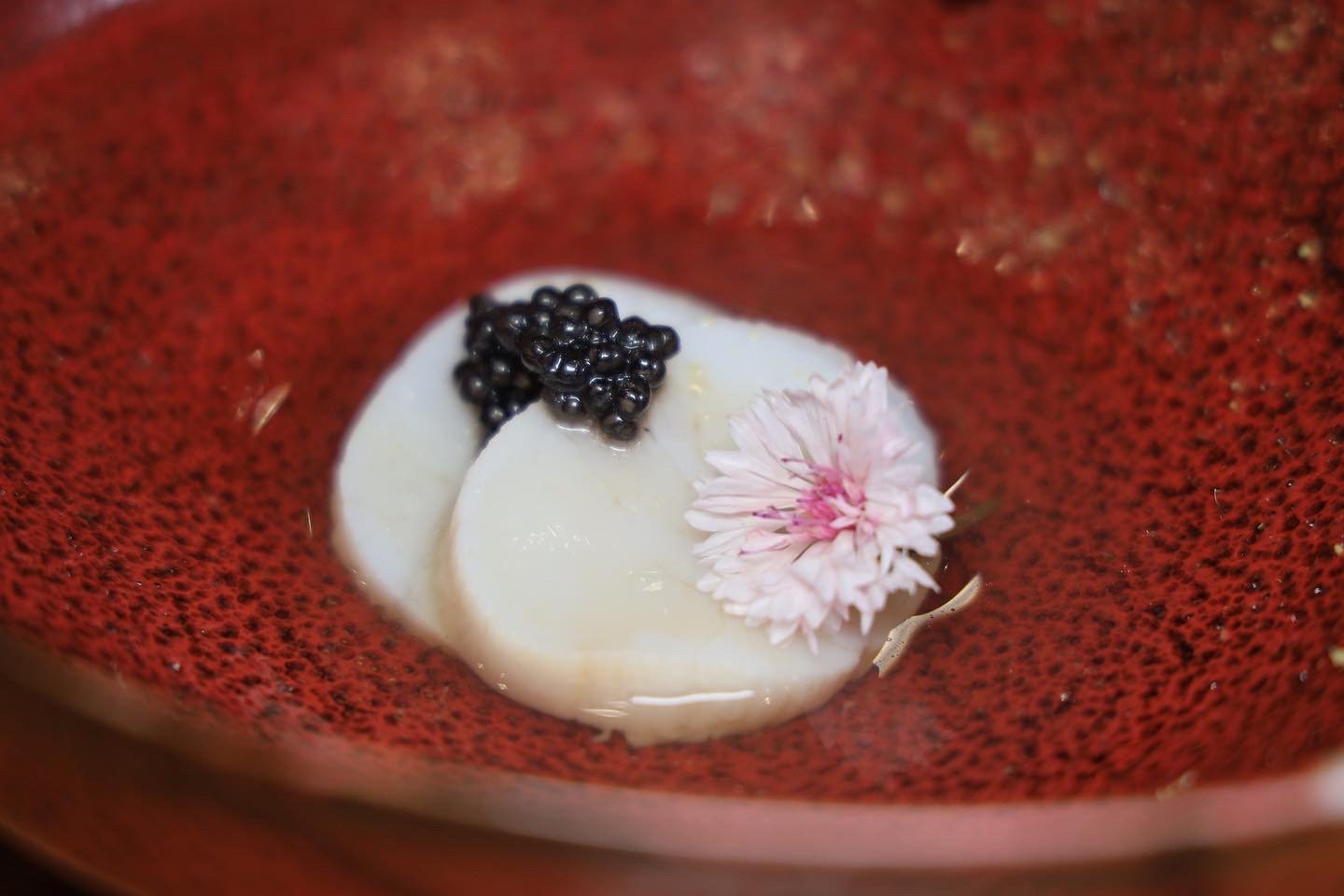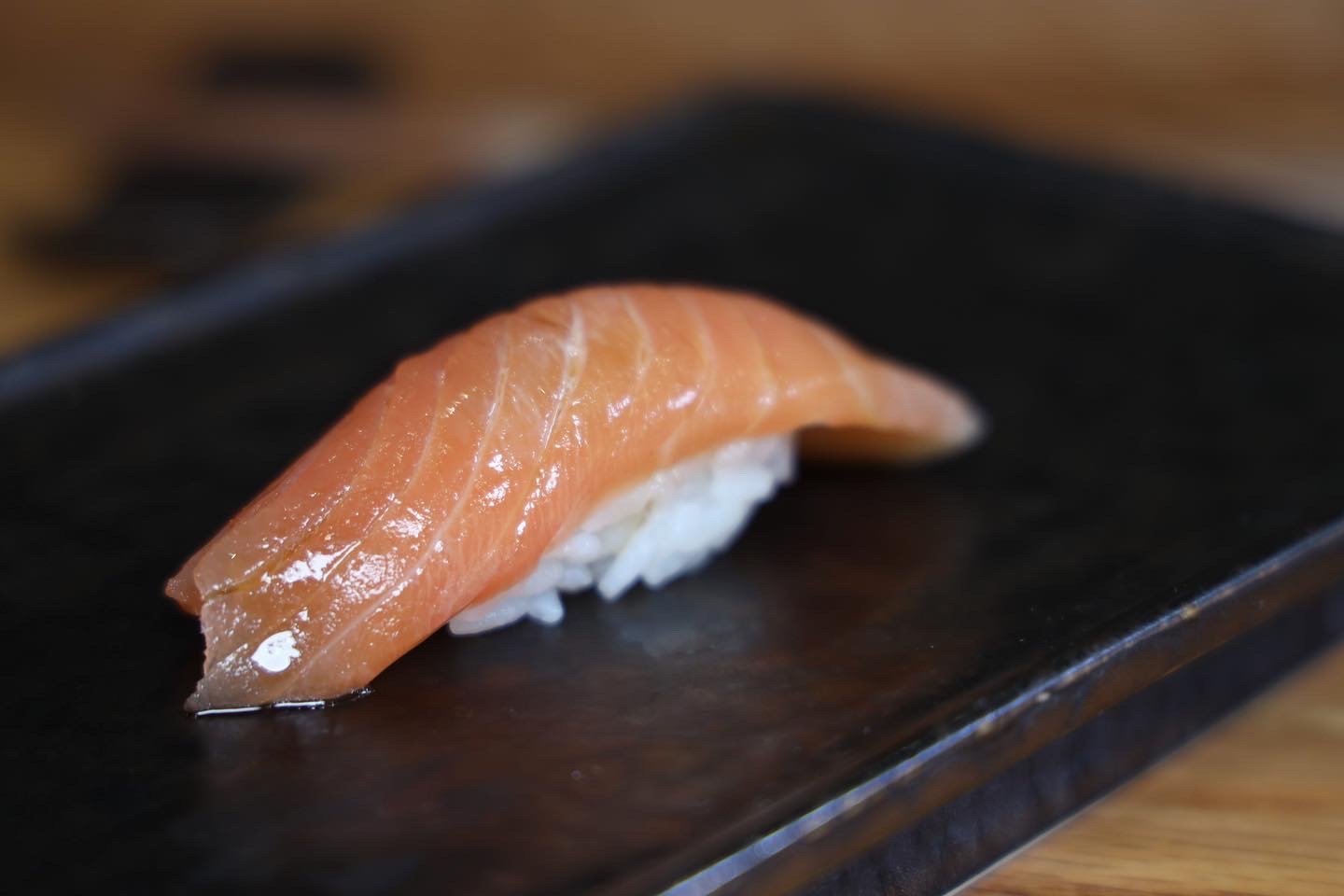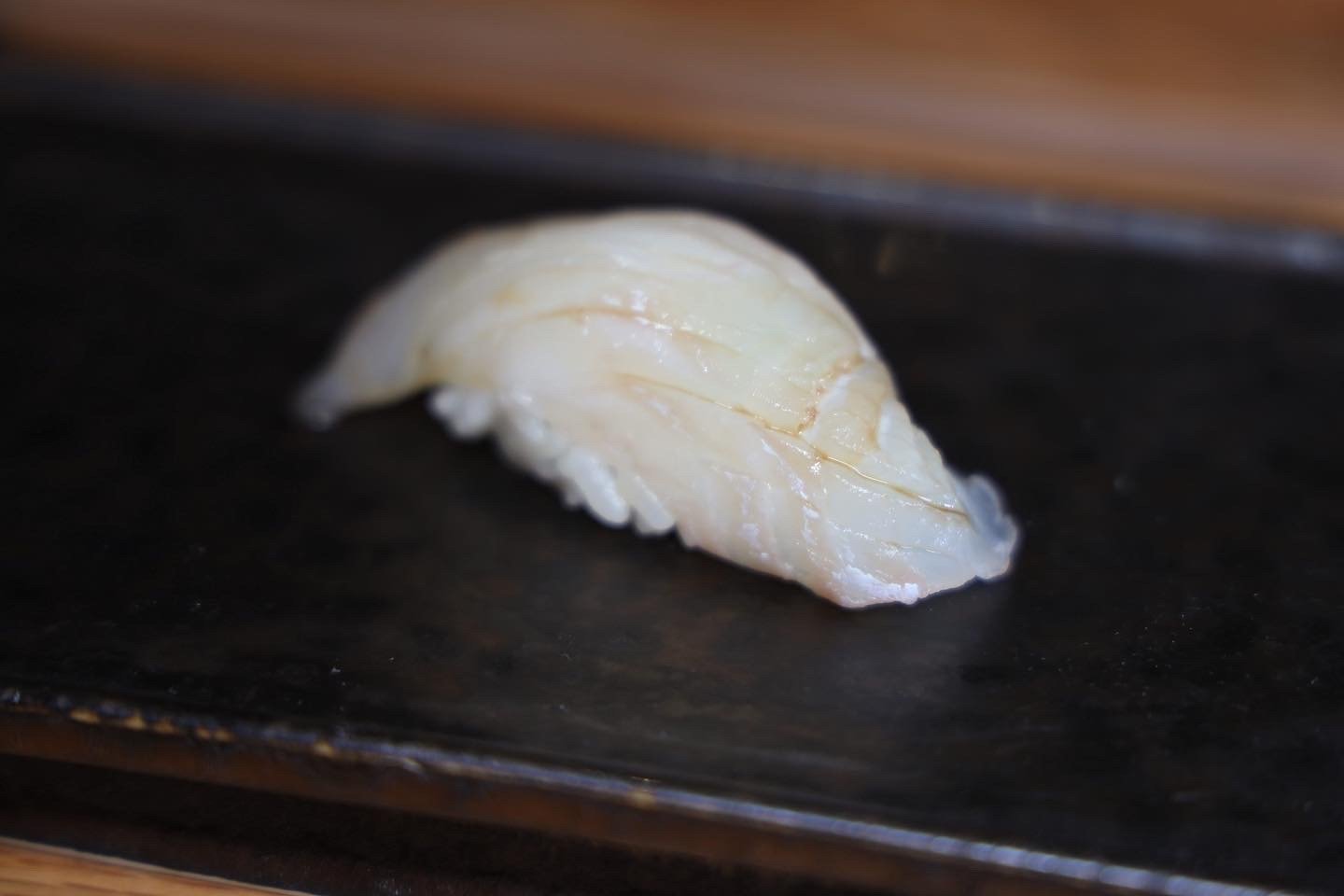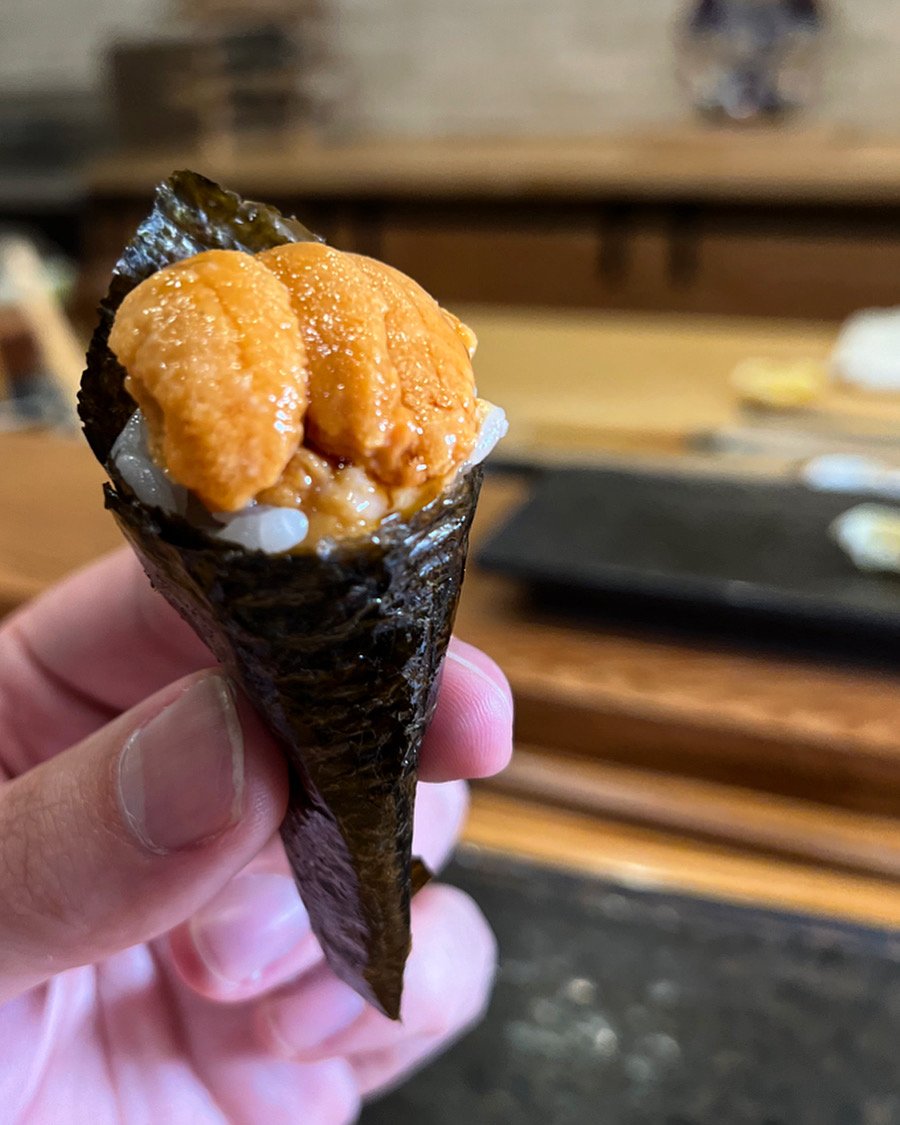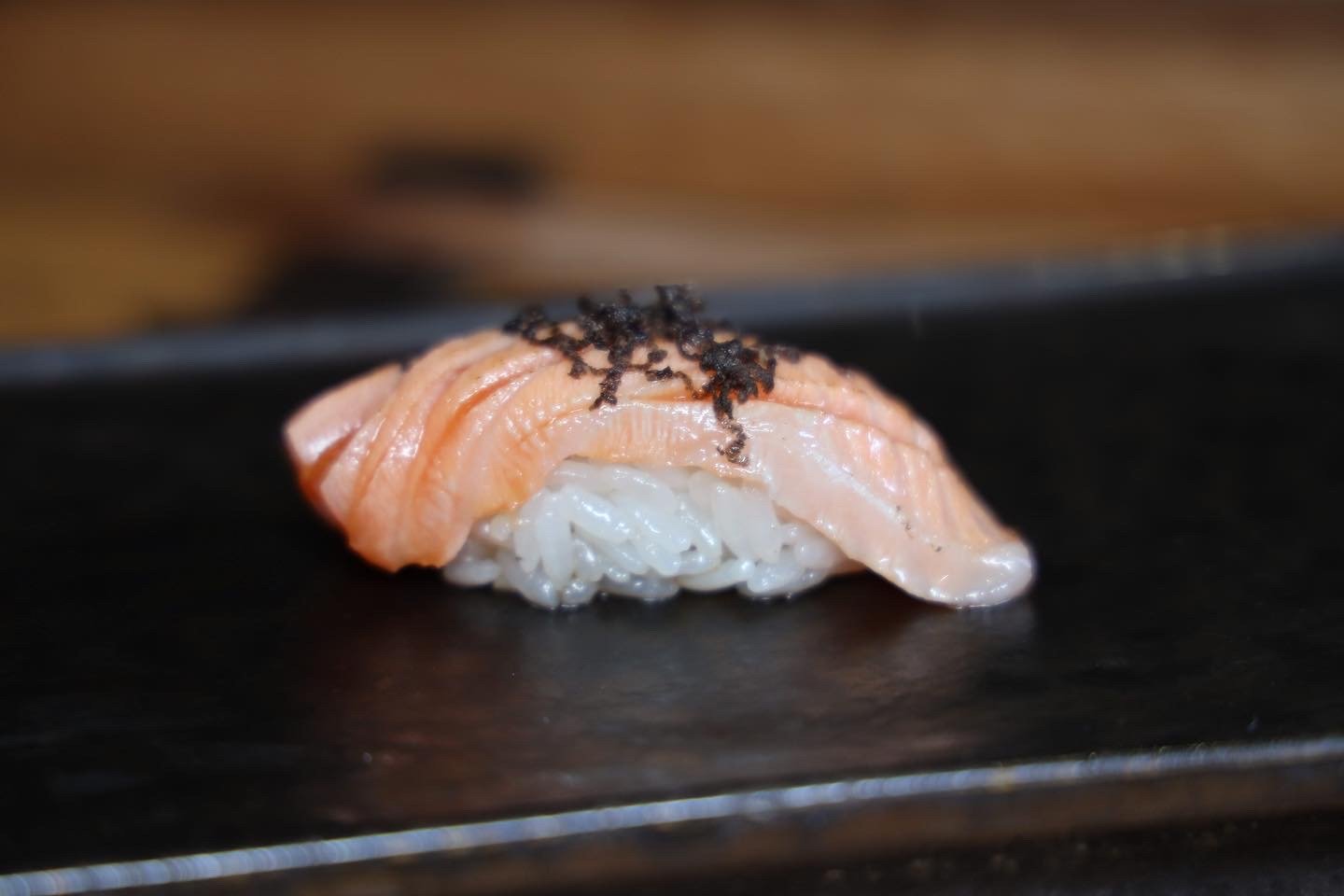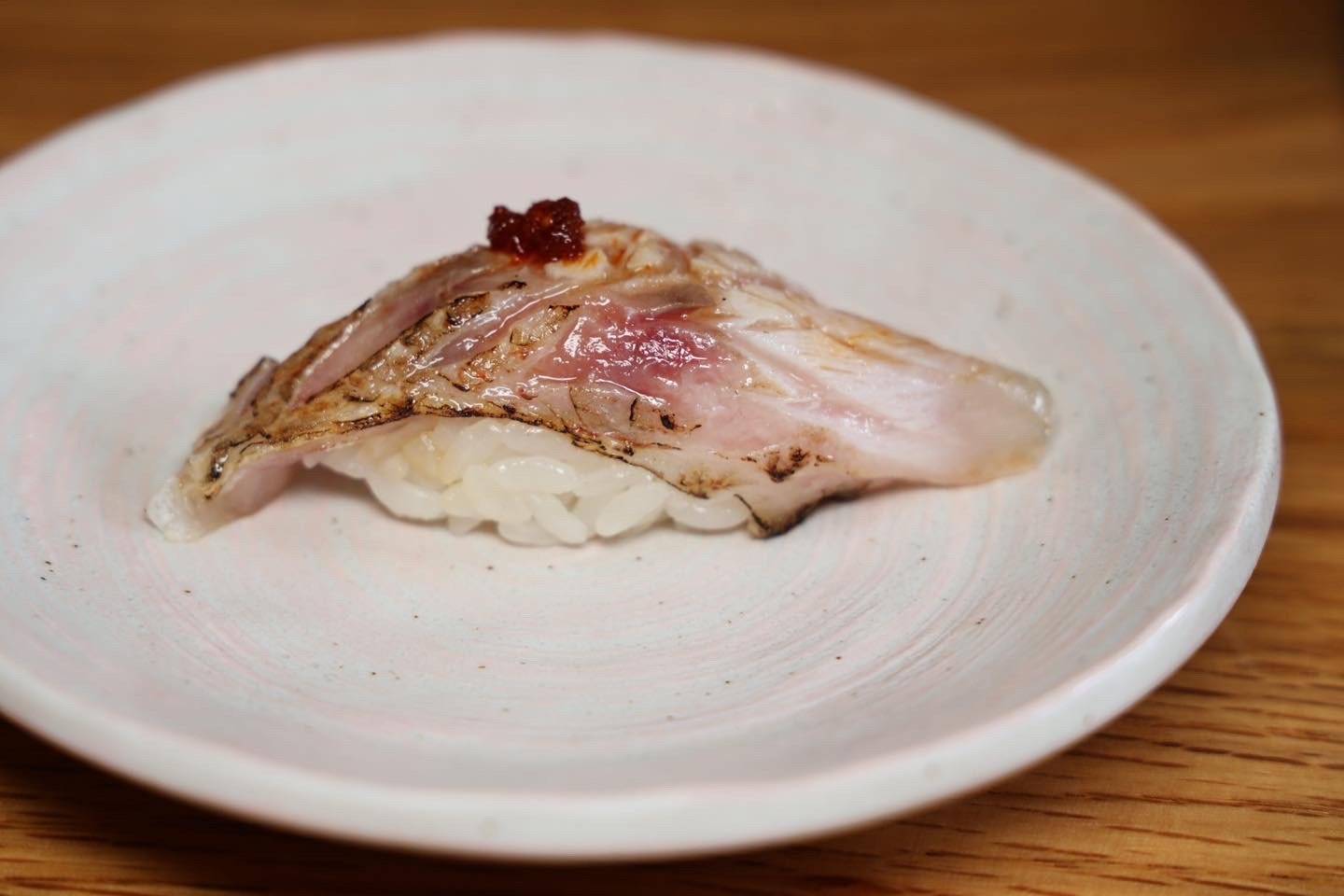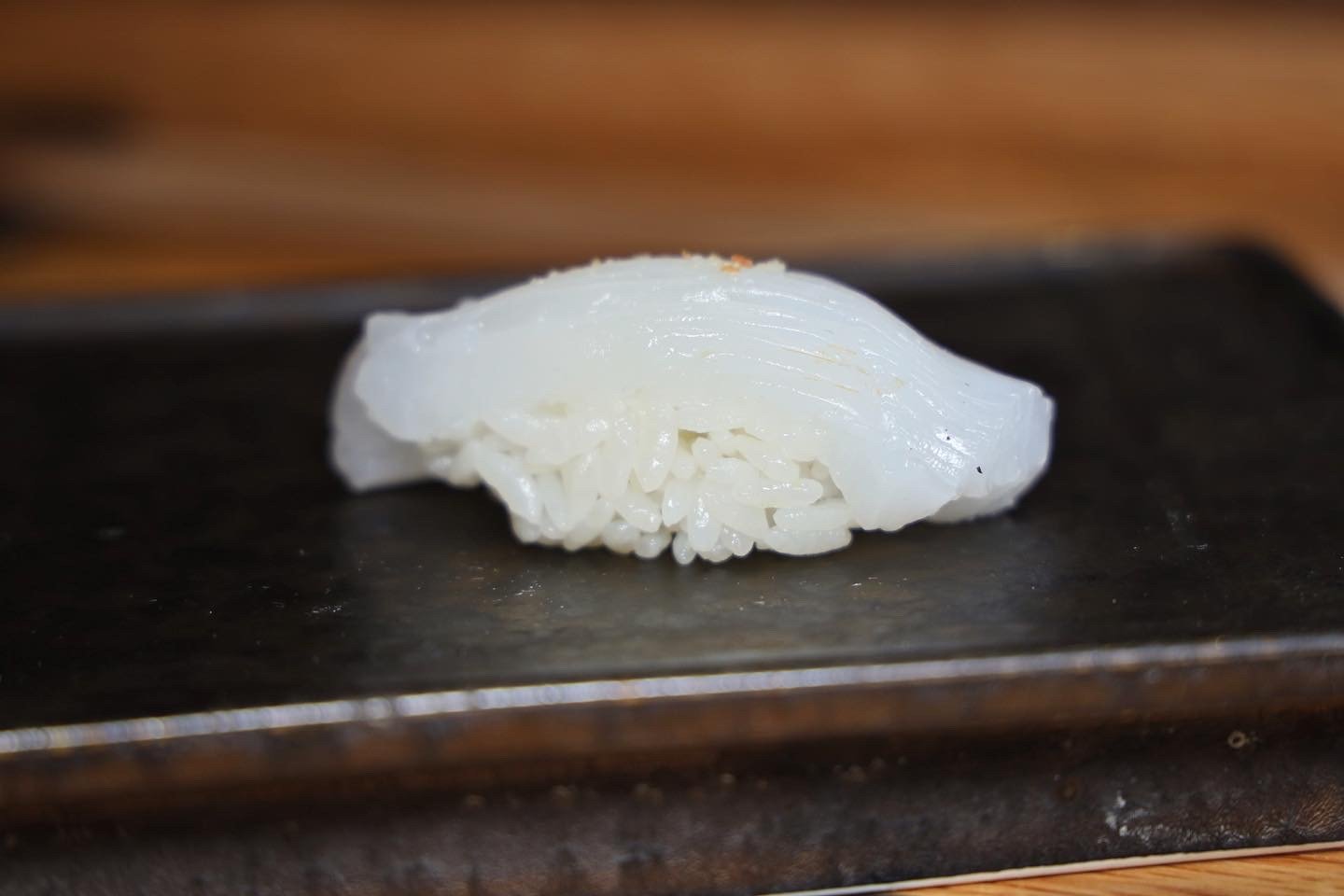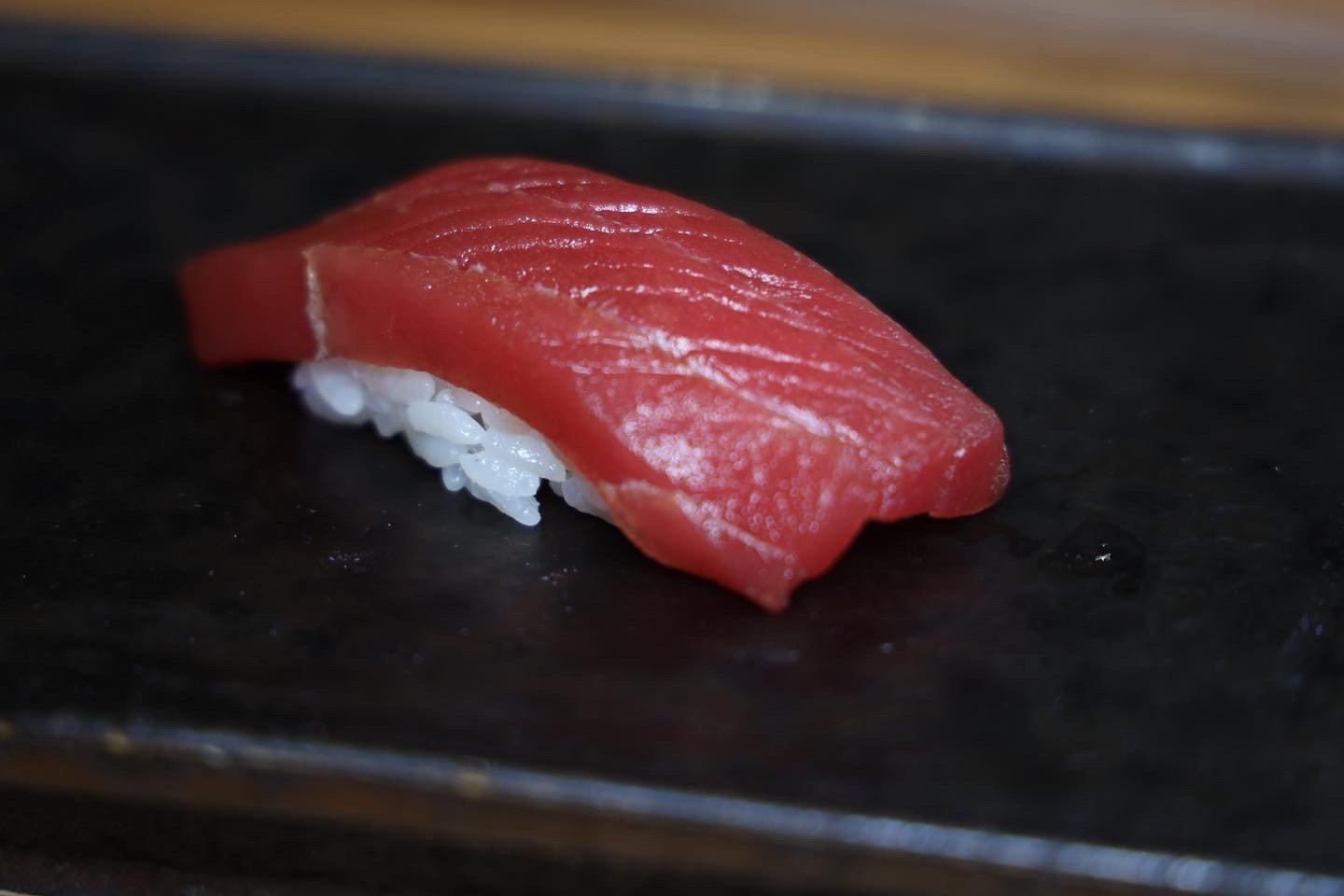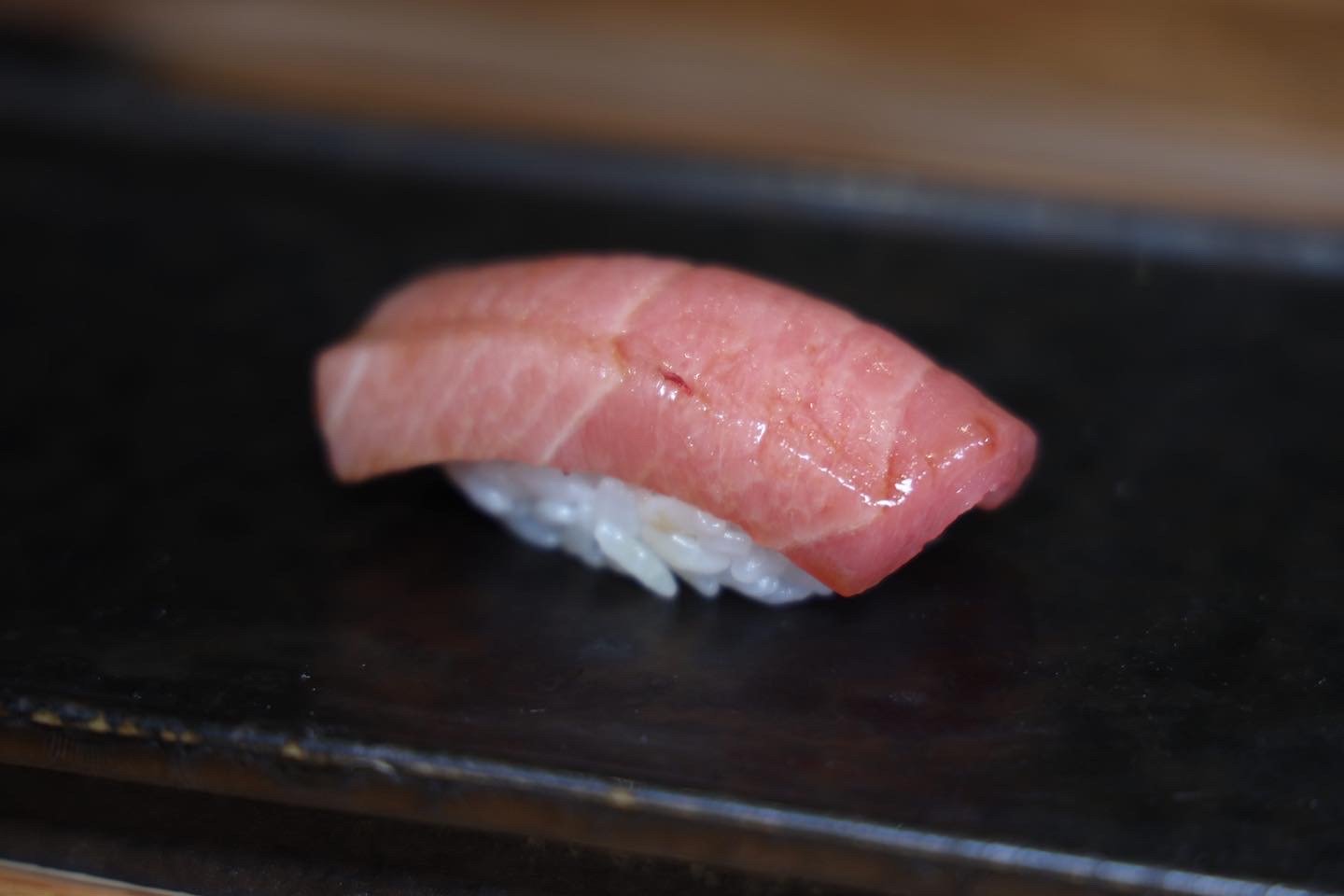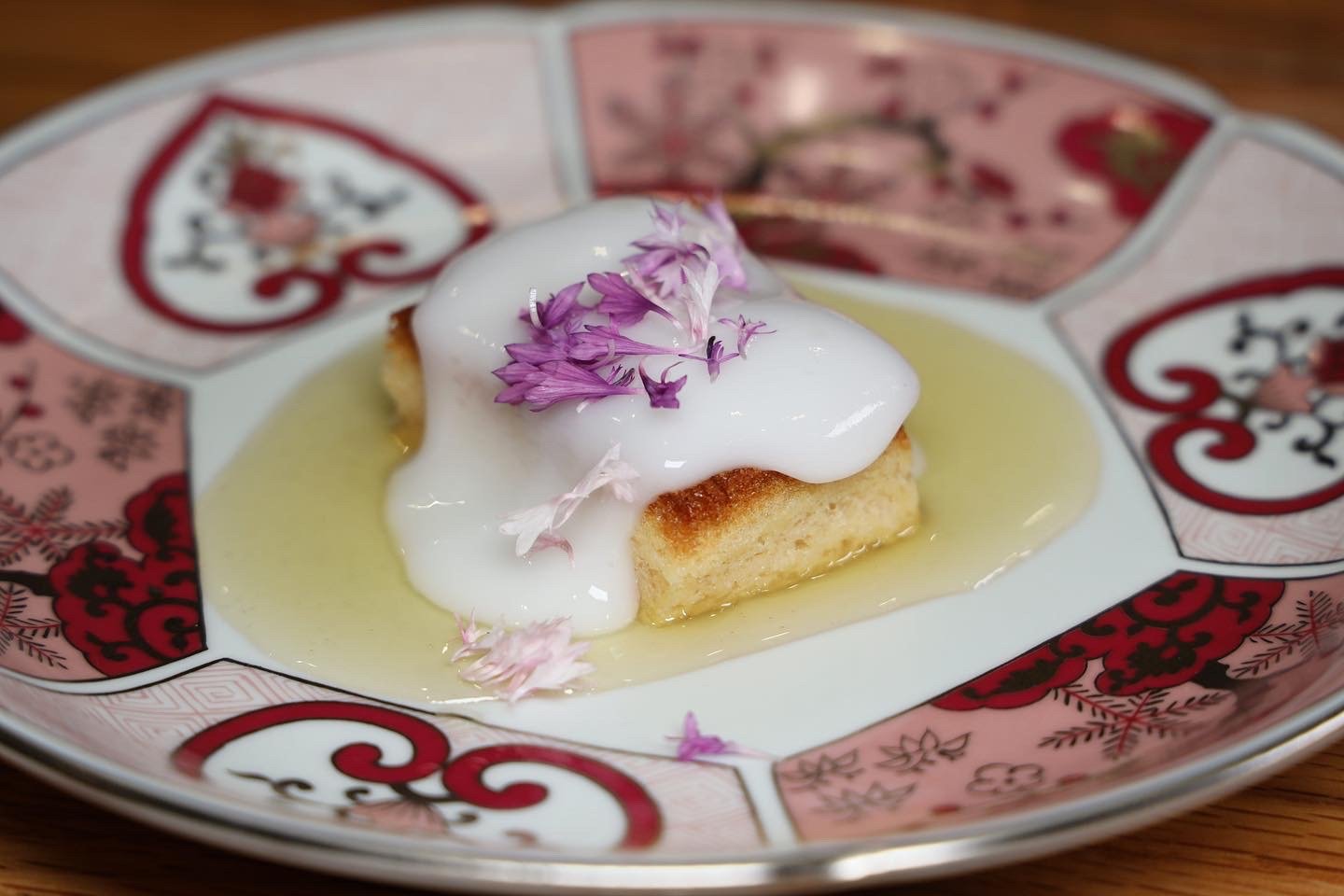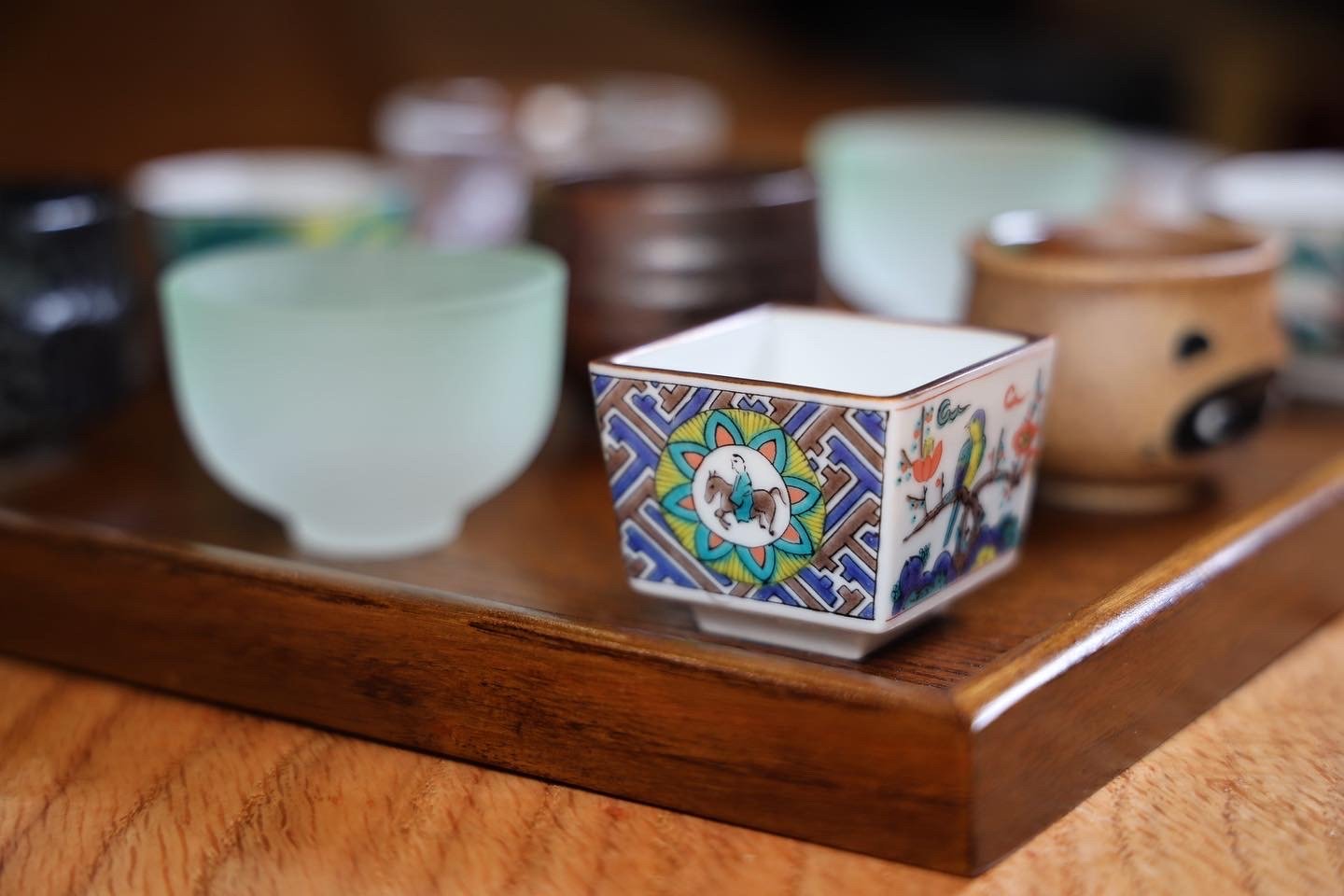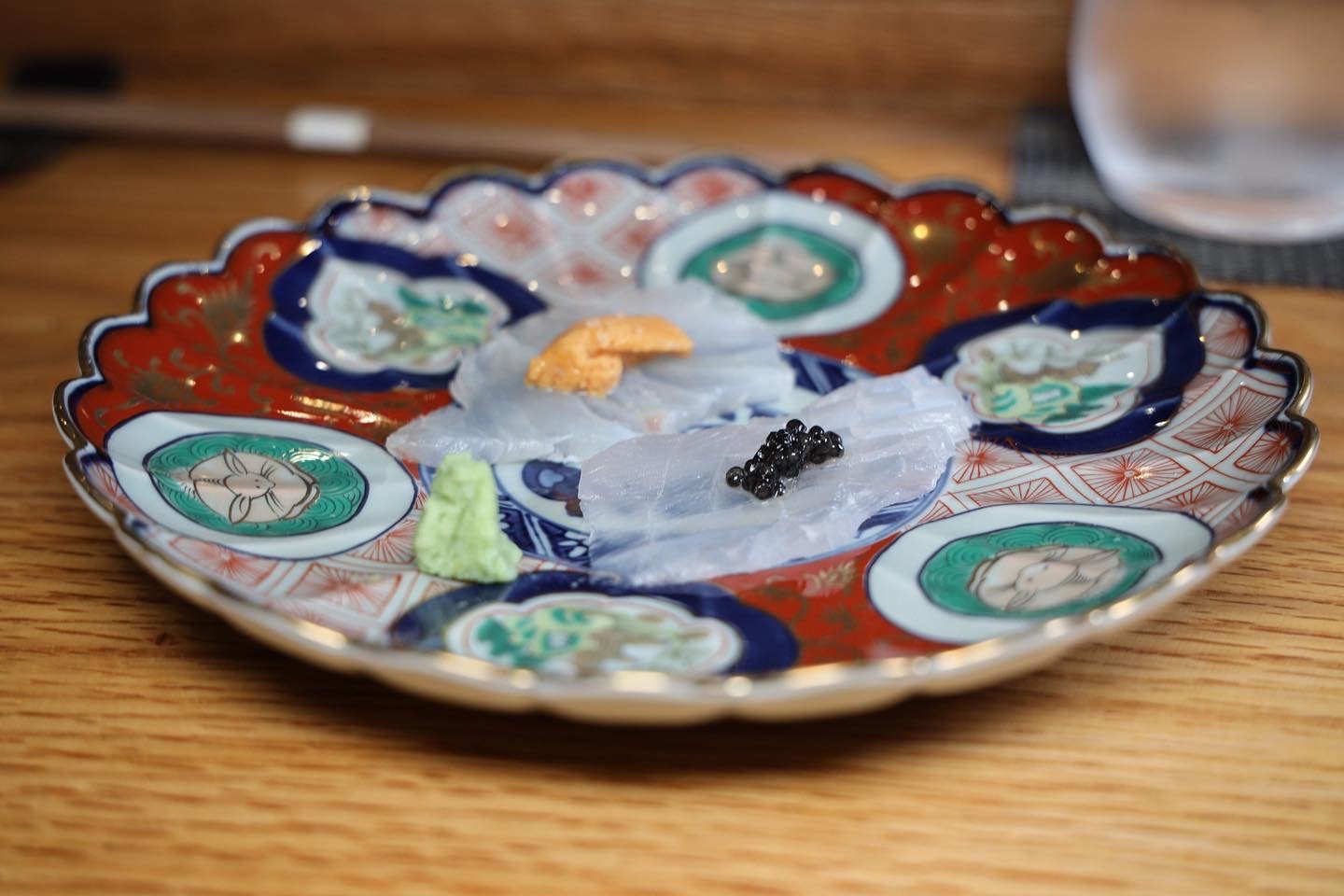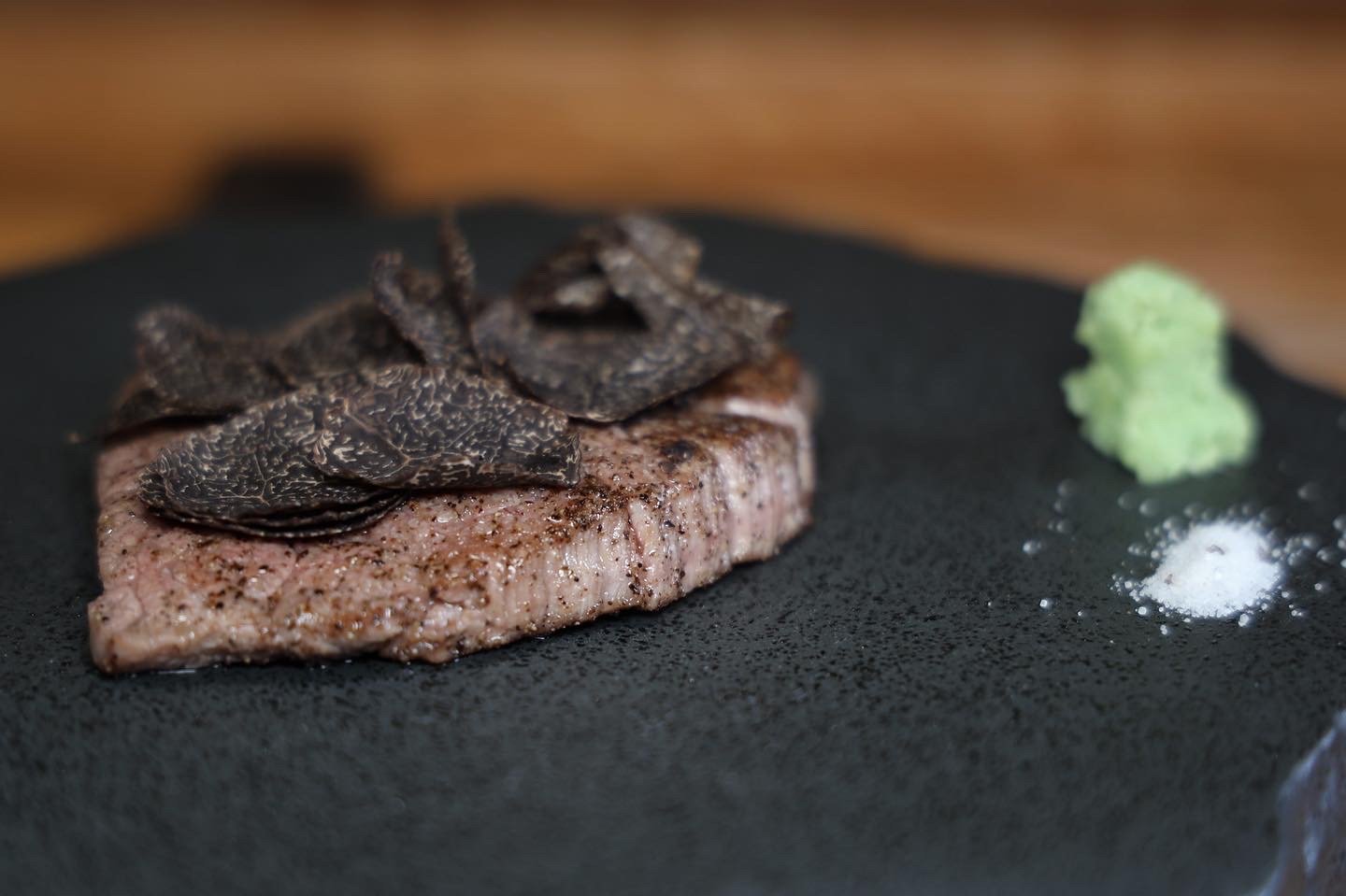Prime Fish Omakase
Shiromi Sashimi at Prime Fish Omakase
Y’all. Anyone who has been following my IG stories knows I went to Prime Fish’s first Omakase offering, and all I can say is WOW. Chef Robin has done an absolutely incredible job!
Worth every cent
Keeping it real: the dinner consisted of 15 courses at $200 per person. While pricey, I truly think it was 100% worth the money. The quality of the fish at this omakase was better than some I’ve had in NYC, and even rivaled a few I’ve eaten in LA! Pretty much every single piece was perfection, from the texture to the seasonings all the way down to the rice.
The details you’re dying to know —
Without further ado, here’s the lowdown of each course:
Shiromi Sashimi
Stripe jack with garlic butter salt - Another VERY unexpected combination. This was a classic shima-aji, so think: fairly lean, firm in texture, with the slightest bit of fat. The fish itself had a slightly sweet and very delicate flavor, which then transformed into a sinfully rich butter-garlic combination. Oof, in the best way possible.
Yellowtail with plum - Another buttery, delicious texture! The plum sauce added a hint of tart acidity, which perfectly complemented the fatty creaminess of this cut of Yellowtail. In my head I was thinking “plum = sweet”, but it was very different than I imagined. Surprising and phenomenal.
Snapper with yuzu – This was a traditional preparation of snapper, and it was amazing! That classic citrus flavor with a hit of pepper. Super tender, almost silky in your mouth. While I’m not aware that anything unique was done to this snapper, I’m not exaggerating when I say that everything about it was a 10/10. Quite frankly, this was probably in my top five best pieces of sushi I’ve ever eaten.
Uni Chawanmushi – Real talk: I had ZERO clue what this was when looking at the menu, but since I love uni I already knew I’d like it. It turns out that this is a steamed, almost custard-like egg, with California Uni. It’s cooked with in-house made fish bone-broth, and then mixed with some chopped scallop. Let me tell you, I was a BIG fan! This dish was very comforting, almost like a Japanese Fish Chowder, and tasted like the ocean without being fishy. You got a great brine, coupled with a creaminess from the uni, and then a more traditional, slightly sweet custard finish.
Tachiuo Uni Risotto - I loved this dish too, but frankly — being Italian, myself — I wouldn’t quite call it risotto. This was very much a rice bowl, given the texture. The chef took uni and folded it until all the uni broke down and evenly coated the rice. It was then topped with grilled belt fish and neggitoro. Again, this dish tasted like the ocean and was very reminiscent of the flavor of an oyster. It was light and delicate, creamy and briney, perfectly complemented with a pop of wasabi and fattiness from tuna.
Young Amberjack (Kanpachi) Nigiri - Whether or not I like young amberjack really depends on the day. I love the light, crisp, clean flavor it has; however, the texture tends to make or break my experience. It’s really luck of the draw. I’m happy to report that the amberjack at the Omakase was perfection. It was so tender and silky, rather than the firm (and sometimes tough) amberjack I’ve had. The chef prepared it with a special marinade that gave off slight truffle and vinegar notes without overwhelming the delicate flavor of Amberjack. It was HEAVEN.
Kombujime - We’ve already established I LOVE a good snapper, right? Right. This nigiri was no exception. The snapper was marinated between two pieces of kombu (sea kelp) to give it some added depth. Just like the first piece of snapper from earlier in the night, it had a fabulous, silky texture. The citrus and peppery quality came through immediately, and then faded into slightly sharp vinegar and umami notes. Seriously phenomenal.
Ni Awabi - I’ll be honest. With as much sushi as I’ve eaten, I had no clue what this was. Turns out, this is abalone that was braised in sake. Chef Robin then topped it with golden sterlet caviar from an albino sturgeon. The texture was somewhere between a squid and clam, so it had chew to it, but for what it was, it was very tender. This dish was very savory, and had an almost smoky or BBQ quality to it.
Sake No Hara - Salmon belly with grated Australian truffle. Looking at it, I thought the truffle was going to overwhelm the salmon. I was so wrong! It was the perfect ratio of truffle to fish to rice. The truffle itself was a very light, mild truffle, and the fish melted in your mouth into a creamy bliss of decadence. I didn’t want it to end.
Zuke Akami - This was one of the more basic dishes of the night: lean bluefin tuna, marinated in soy. It had a slight wasabi flavor, which melded into the classic bluefin tuna flavor, before finishing with soy. For all its simplicity it was extraordinarily tender.
Chu Toro – My oh my. For straight-up nigiri, chu toro is my favorite. It strikes the perfect balance between a firm texture, melt-in-your-mouth fattiness, and flavor. This was no exception. It was slightly sweet, and brushed with a light coating of soy sauce. I honestly could’ve eaten this all night; it was one of the best cuts of chu toro I’ve ever eaten.
Oh Toro – This was a super interesting take on otoro. The fish was quickly smoked with rosemary, topped with black truffle salt, and lightly brushed with soy sauce. It was rich. It was fatty. It melted in your mouth. Watching Chef Robin smoke the fish, the most wonderful smell filled the room. With that said, because it was so strong, I was a little concerned the rosemary was going to overwhelm the dish. But again: my fears were premature. The seasoning was very subtle and delicate.
Botan Ebi - I’ll be blunt (I mean, when am I ever not?). This was the one dish I could have done without, which is to say it was my least favorite of the night. It wasn’t bad, per se; however, it wasn’t the same quality as the rest. Sweet shrimp, lightly rubbed with wasabi, and topped with lime juice. The texture was spot-on, and the shrimp itself had great flavor. That said, I think the lime may have been under-ripe, because the dish had a bitter aftertaste. Too bad.
Yaki Anago - Anago is saltwater eel. Chef Robin prepared this on a Yakitori grill and served it with a house-made eel sauce. The grill gave it a slightly smokey flavor which was nice, but otherwise, I’d describe it as a good, classic anago. Solid.
Hokkaido Uni - I LOVED THIS! It was the absolute epitome of uni. It hit ALL the buttons: great umami notes, that fresh, briney ocean flavor, and a beautifully creamy, custard-like texture. I was so excited by it that I completely forgot to take a photo; I only captured video! (Lucky for you all - someone was gracious enough to give me their photo). I wish I could have ordered more, too, but someone beat me to it after the Omakase, and they sold out of the uni. Softly weeping.
Atsuyaki Tamago - This was unlike any tamago I’ve ever had, including what I’ve had at some of the best Omakase in LA. Whenever I’ve had it, the tamago looked and tasted like a fluffy omelette. But Chef Robin used a 400-year-old method to create the lightest, fluffiest, almost cake-like tamago. He didn’t use any baking soda, flour, or anything; the magic was all achieved through whipping the egg in a certain manner. It was slightly sweet, slightly savory, and PHENOMENAL. I’m telling you; I finally understand the hype behind this dish.
Clam Miso Soup – So this. THIS was the biggest surprise of the night for me. Chef Robin made it with a clam-based dashi, rather than bonito-based. It was amazing! It wasn’t very clam-esque, actually. It was just a perfect umami flavor: savory, salty, a little earthy — soul warming to say the least. WOW.
Don’t forget the sips!
Now as for drinks, we DRANK. Sake is extra on top of the base Omakase price, but I highly recommend getting some to round out the experience. Chef Robin is a Certified Sake Adviser, so not only does he bring in some phenomenal sake (and extra special sake specifically for the Omakase), but he can tell you EXACTLY which one will go best with your food, based upon your palate. We had the sake flowing, and then ended up making friends with the people sitting next to us, so we were able to try several. I really can’t recommend this enough.
Here’s what we drank:
Heaven Junmai Ginjo - At Chef Robin’s suggestion, this is what we ordered first. It drank incredibly smooth, with a very mild flavor. It had clean, crisp, neutral notes--almost like honey if it wasn’t sweet—and a very light mouthfeel. It was, in my opinion, a perfect pairing for the nigiri we had. ($90 add-on)
Heaven Junmai Daiginjo - This was a show-stopper bottle for me, as I love a little flavor in my sake. It was clean and crisp, just like the Junmai Ginjo; however, there was a more pronounced flavor of ripe fruit and apples. ($200 add-on, one that I would happily pay time and time again)
Azure – If you wanted sake but didn’t want to splurge for a special bottle, you could still order sake off of their regular menu. My favorite bottle from Prime Fish’s everyday sake menu seemed to be quite a popular choice. It’s super smooth and super mild, almost like drinking water.
Tenryo Hidahomare Junmai Ginjo - Another bottle from the everyday menu, when available. Prime Fish offers this in a large and small format. The small format is perfect if you are a single traveler. The flavor is also much more pronounced, with a very mineral-esque, tart apple-like quality. Not quite as smooth as the other bottles I have listed, but also less expensive, and a great option nonetheless.
High quality, seasonal offerings, keeping things fresh
All in all, I think this was a GREAT first Omakase for Prime Fish! While the varieties chosen were fairly safe, the quality was top-notch and that elevated the whole experience. The menu will change every month to feature the best cuts and varieties for that season (for example, uni is best between September and April). Not only does this ensure quality will be at its best, but it allows for people to come as many times as they’d like without making the experience repetitive. This will also allow the Omakase to evolve with time as Prime learns what customers like. Do they need to stick with more conservative cuts, and use sauces to make the experience unique? Or, can Chef Robin introduce some riskier, less common or exotic offerings, like spear squid, Kamasu (barracuda) or jellyfish — or even layer multiple cuts on a nigiri (such as what he does with his “Prime Nigiri” on the everyday menu)? Time will tell!
After my experience, I’ve told the team to mark me down for any and all nights that an Omakase will be served (as long as I’m in town). And let that serve as my highest praise!
Update: Prices have since increased from my first omakase; they now run $250-$300 per person. Despite that, I’ve since gone to 3 more Omakase at Prime Fish. Every experience gets better and better, and it keeps me coming back to see how else Chef Robin can push the boundaries, while still honoring the ingredients.
Chef Robin is meticulous about his craft, and serves only the best. Their regular sushi menu is great quality; however, the quality of the fish used during Omakase is unparalleled - with many of them being flown in fresh from Japan. Chef Robin is also able to walk the fine line between letting the fish shine, and putting his own twist on each item served, through his use of preparations, sauces, toppings, and interesting combinations of ingredients. Examples are below:
Preparations: cold smoking the fish with rosemary, aging certain cuts to enhance the flavor
Sauces: House-Made Soy, Ponzu, Eel Sauce, Various Vinegar-Based Sauces
Toppings: Fresh Wasabi, Cured Egg Yolk, Black Truffle, Scallions, Chili Garlic, Bonito Flakes, Shiso Leaf, Caviar
Most recently, the restaurant has announced a new, omakase-only concept, which will be located near near the Myer’s Park are of Charlotte. It will be smaller, with only about 6 seats, to create a very intimate atmosphere. The dedicated concept will also make the experience available to more people, as the current Omakase only runs a couple times per month - ultimately creating a large waitlist.
Long story short, if you are a sushi lover - this should 100% be the next meal you splurge on.
My Second Omakase Experience at Prime Fish (December 2021)
My Third Omakase Experience at Prime Fish (January 2022)
My Fourth Omakase Experience at Prime Fish (February 2022)
My Fifth Omakase Experience at Prime Fish (April 2022)
My Sixth Omakase at Prime Fish - Now at the New Location (June 2022)
My Seventh Omakase at Prime Fish - Now at the New Location (June 2022)


